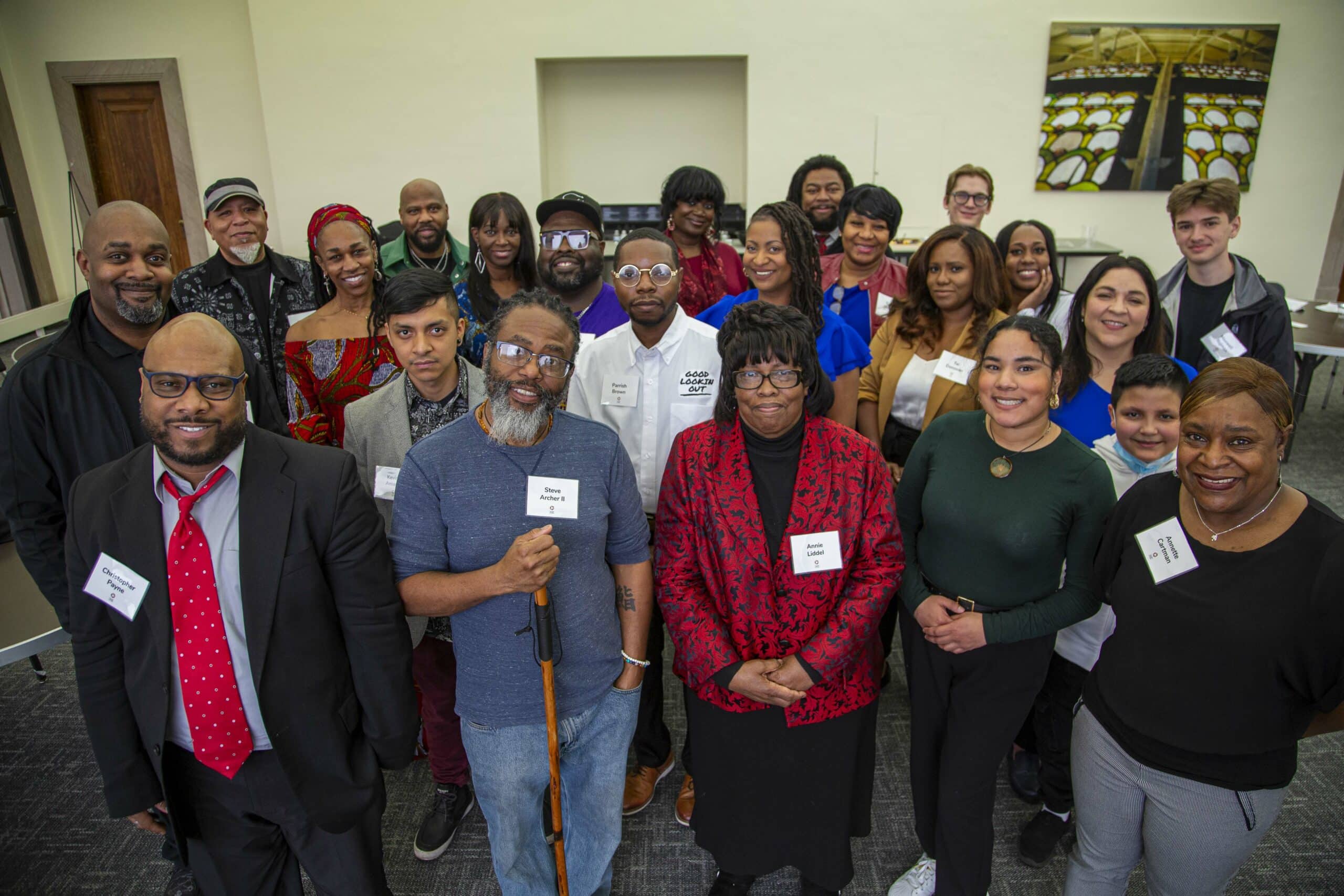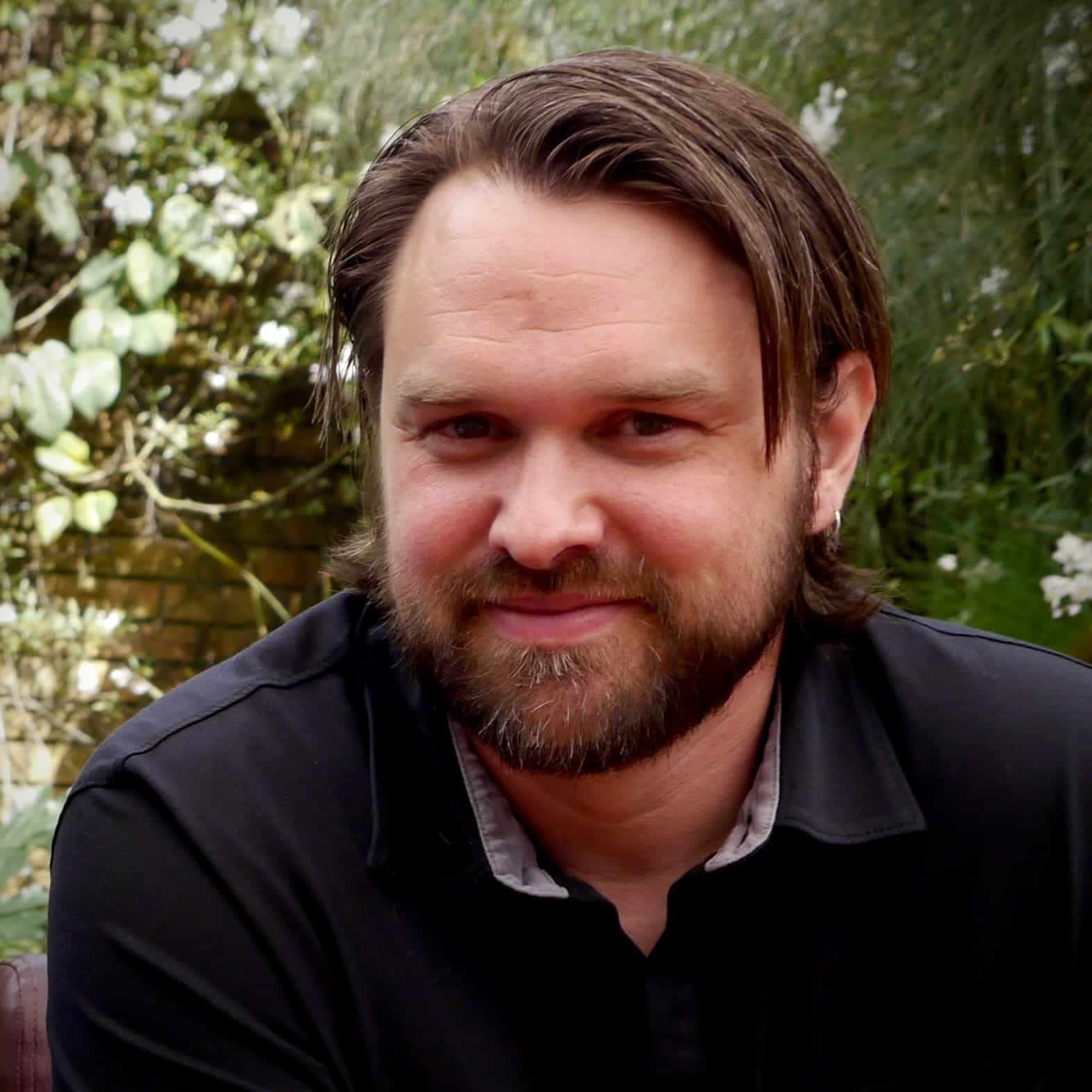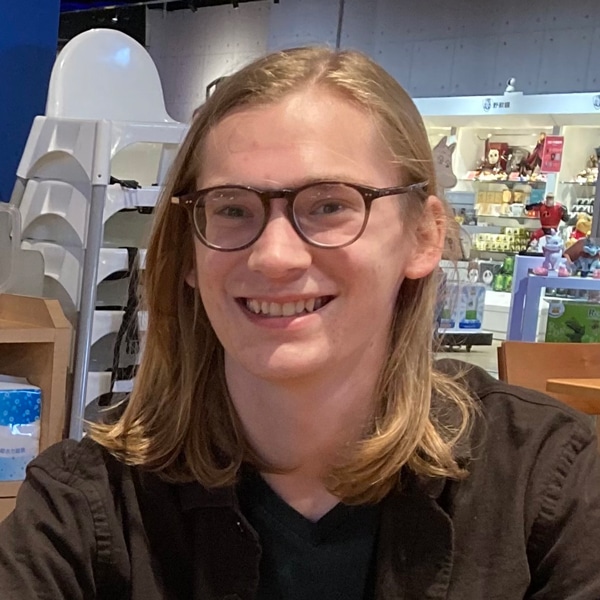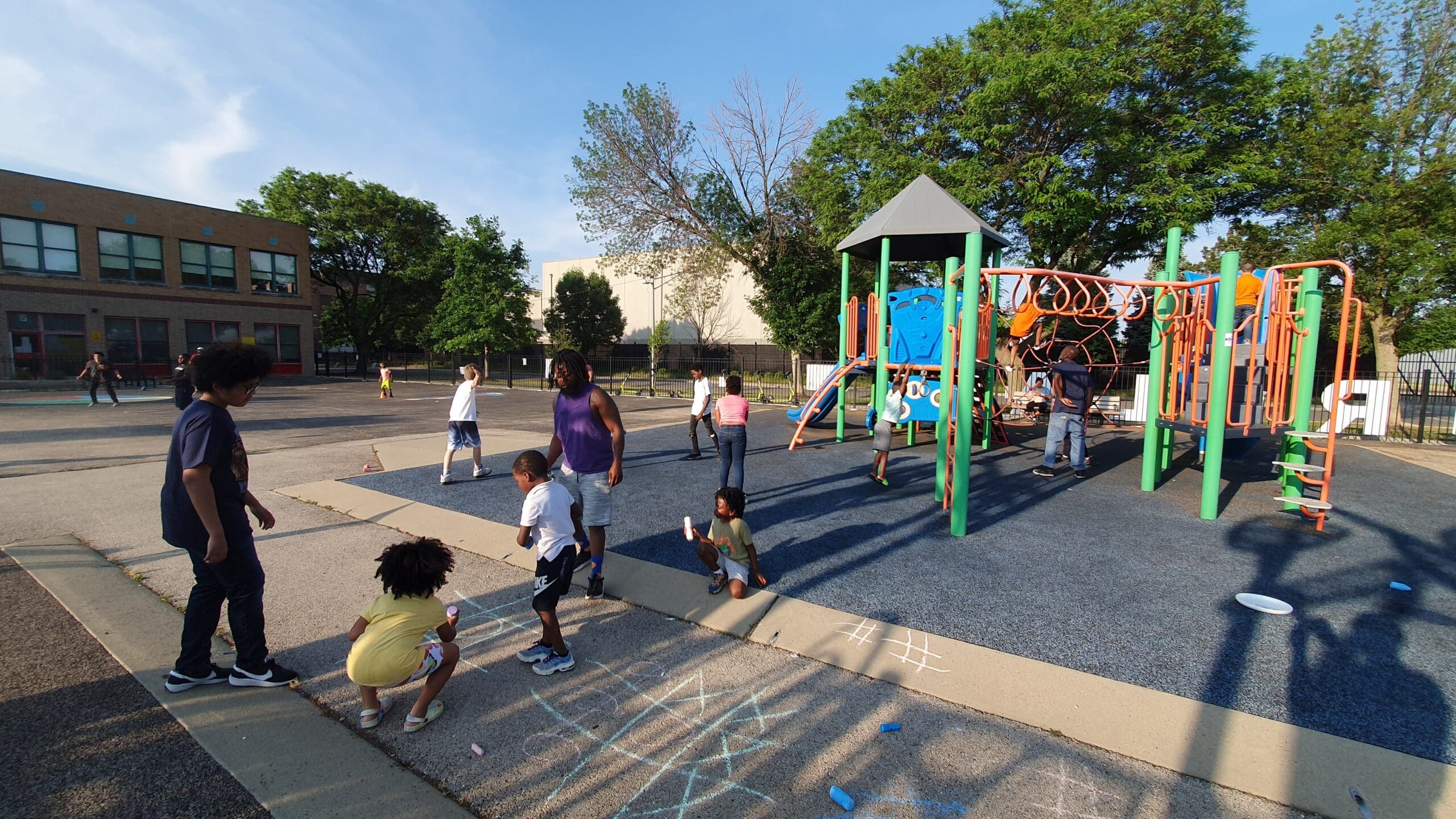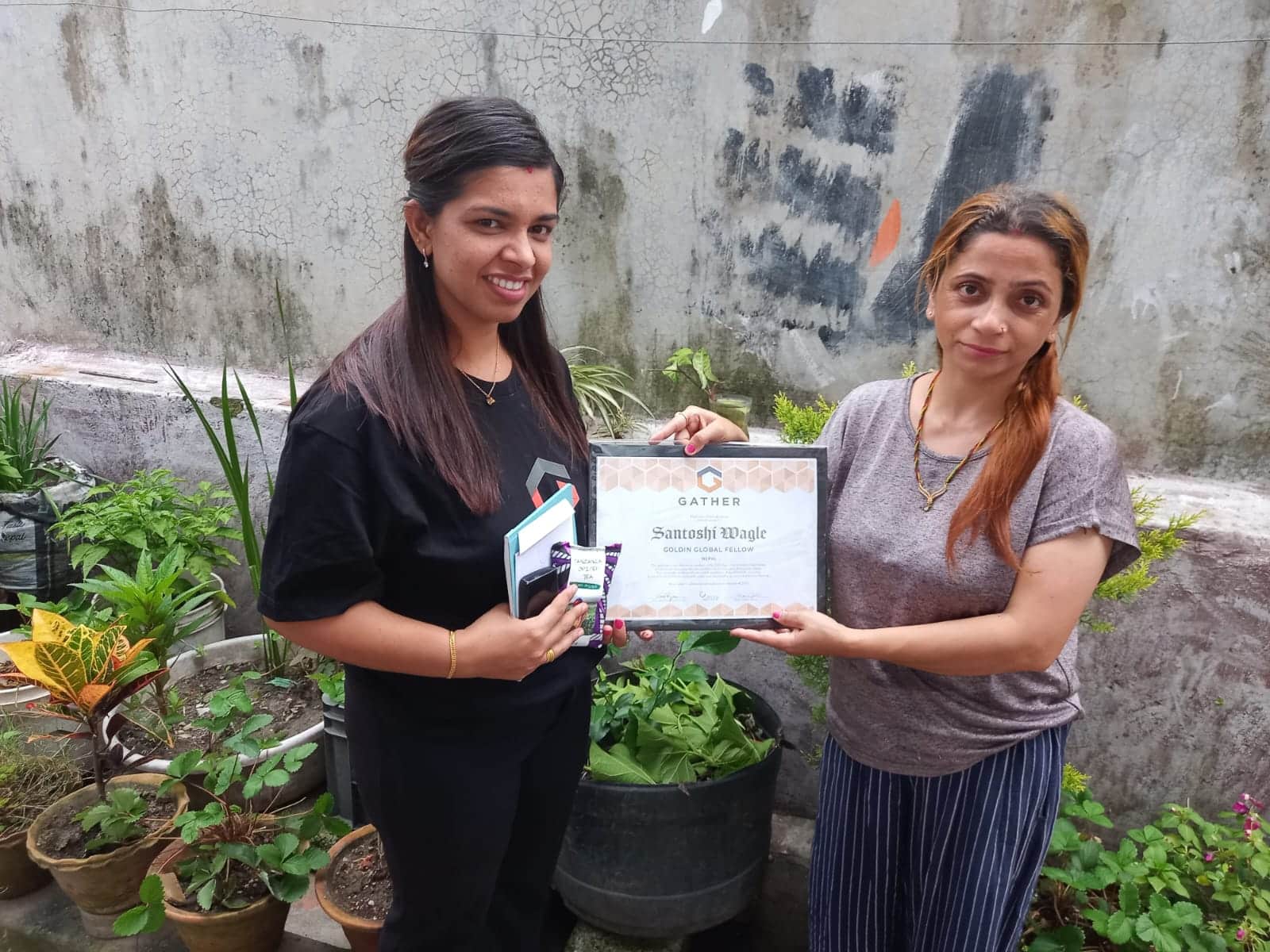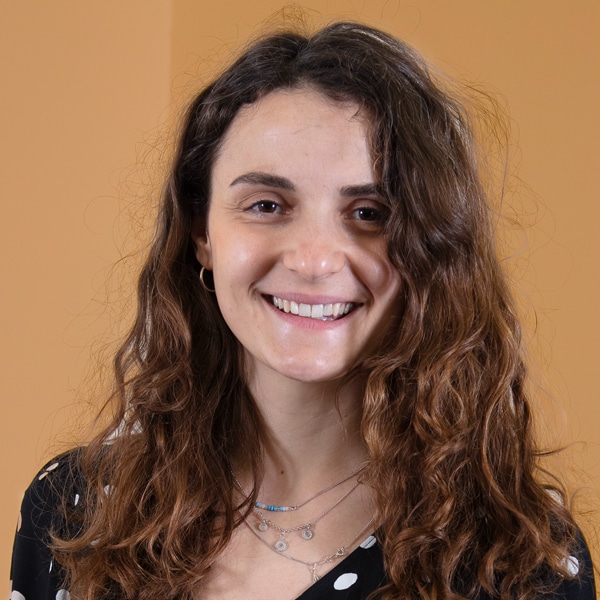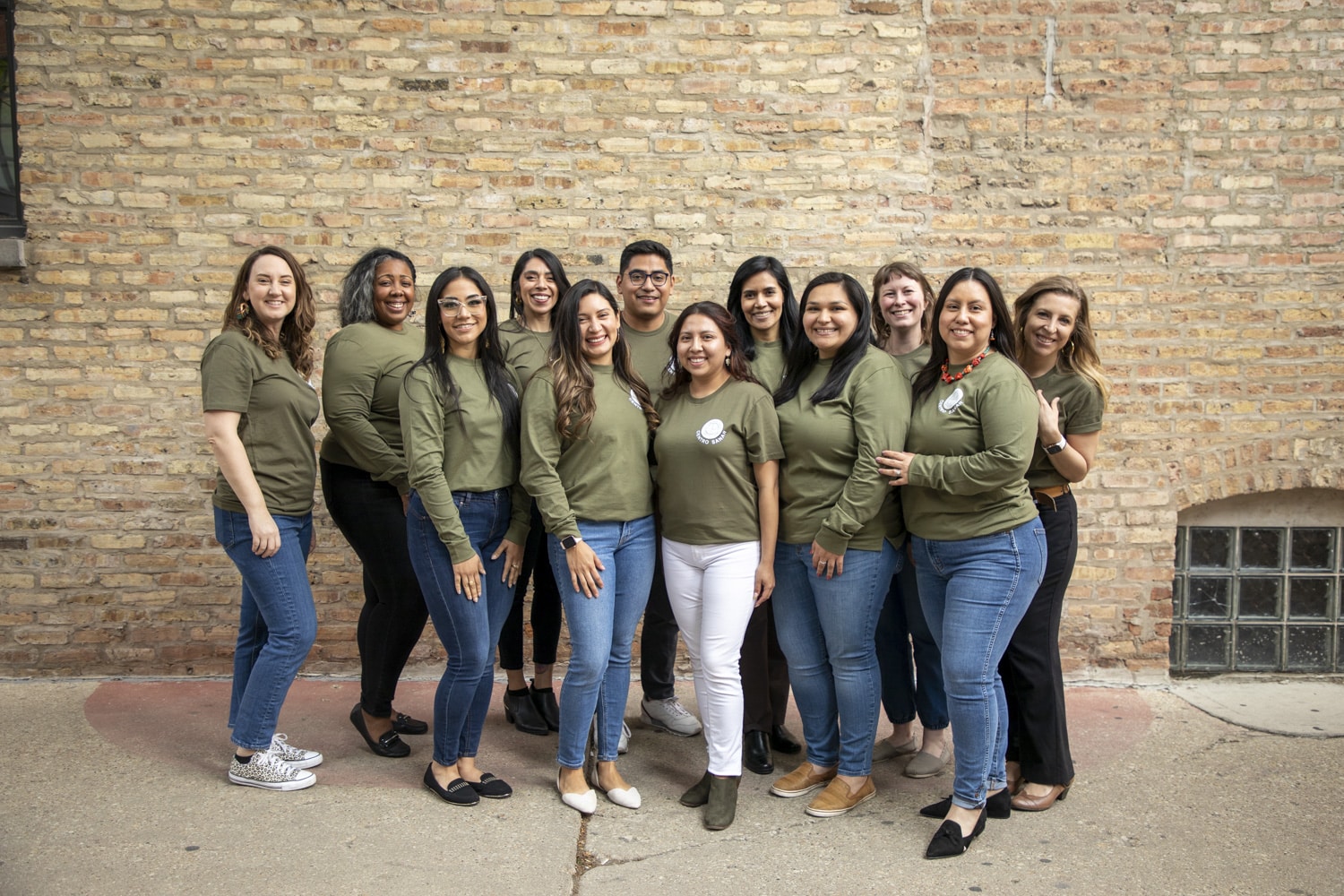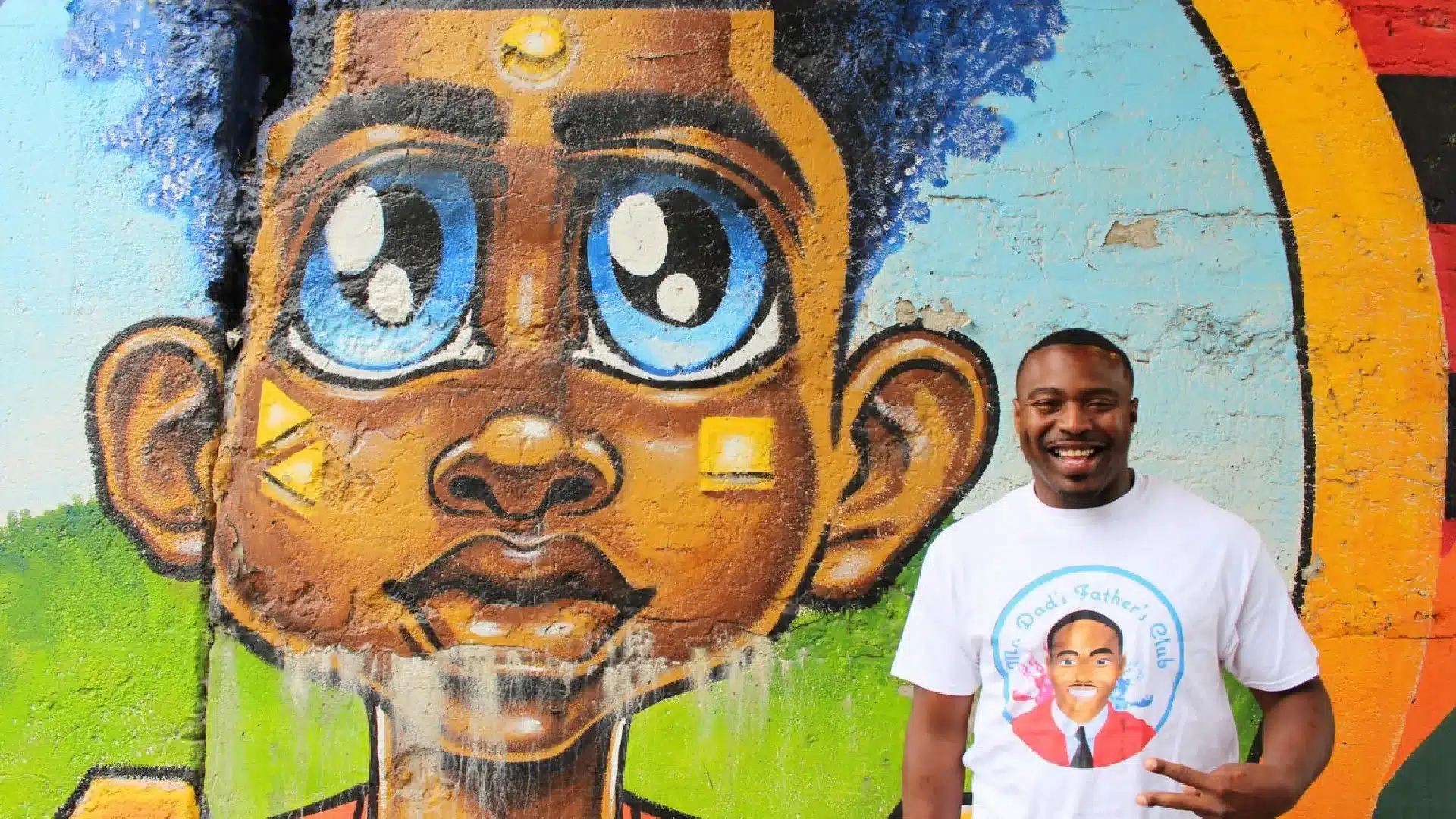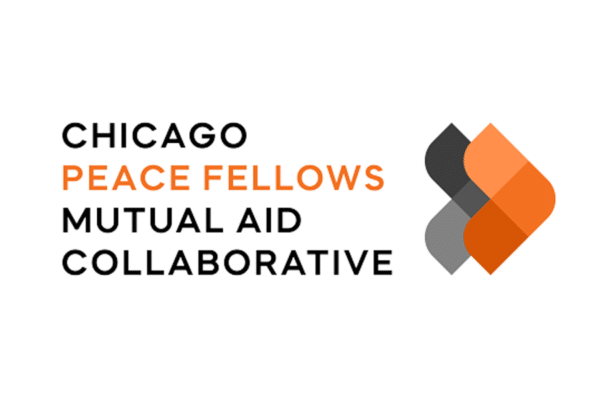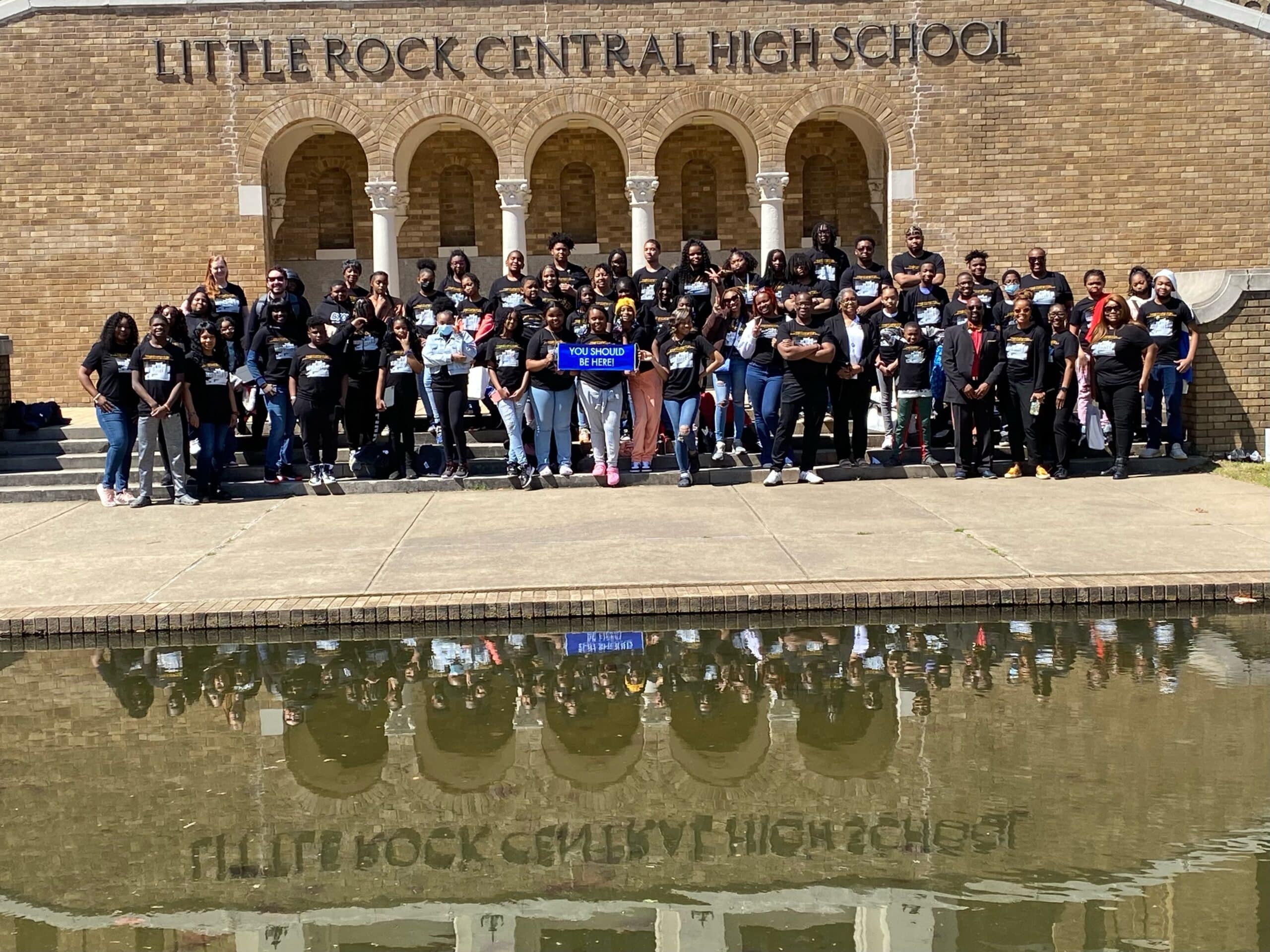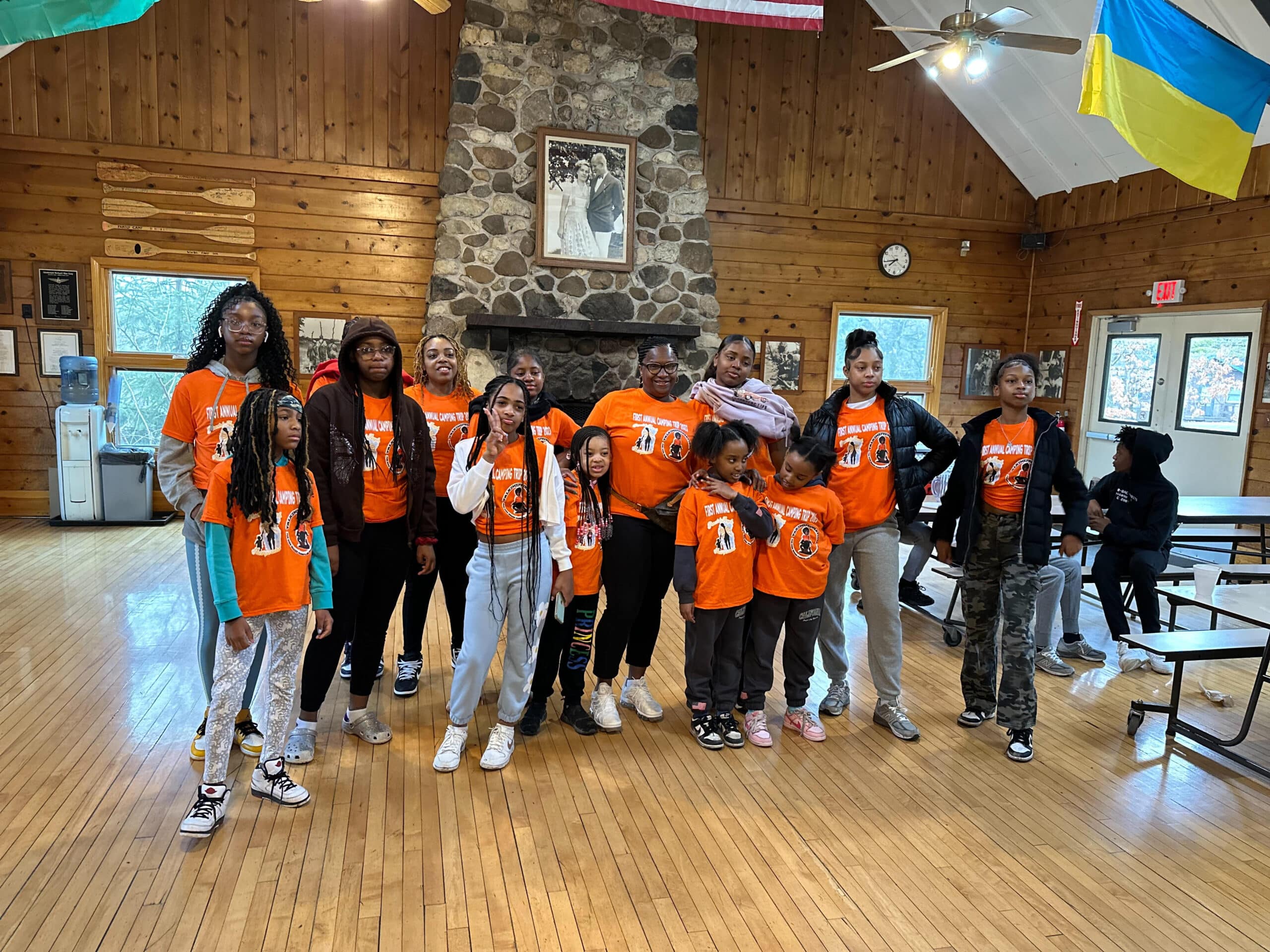Meet the 2024 Chicago Peace Fellows
The Goldin Institute invites you to learn about each of our 2024 Chicago Peace Fellows representing 14 community areas across the city. Founded in 2019 in collaboration with the Partnership for Safe and Peaceful Communities, the Chicago Peace Fellows program is the only leadership development program that is built by and for grassroots community leaders on the South and West sides of Chicago.
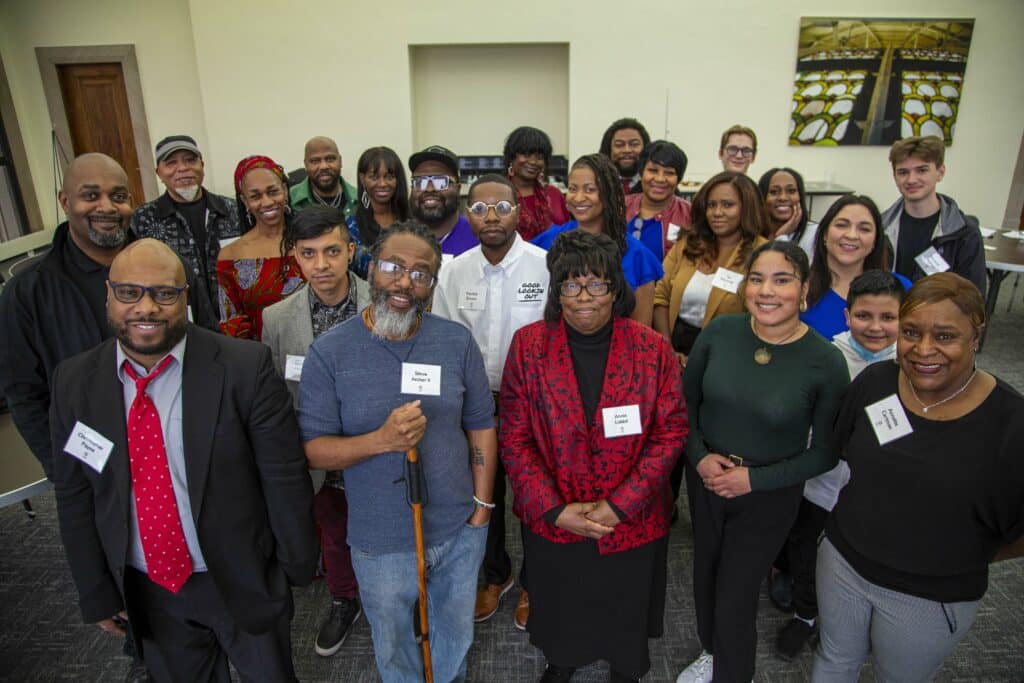
ABOUT GATHER
Peace Fellows participate in GATHER, an online asset-based community engagement course, as well as in-person training, collaborative action projects, and networking experiences with civic leaders, academic researchers, and policy makers. The Chicago Peace Fellows reduce violence by building relationships, engaging youth, collaborative peace building projects over the summer and by creating new networks among residents, families, schools, and nonprofit organizations.
The Fellows are learning together through GATHER, which is both a mobile platform for shared learning and a curriculum for people who want to build on the talents of their neighbors and the assets of their communities to make real and lasting change. Gather Fellows learn and work together through an innovative curriculum that comes pre-loaded on a tablet device with all the connectivity, materials, videos, practices and tools necessary to provide a mobile classroom and toolkit for community leadership.
The Chicago Peace Fellows project connects and equips cohorts of past grantees of the Chicago Fund for Safe and Peaceful Communities to reduce violence and promote peace. The 2024 Chicago Peace Fellows is the sixth all-Chicago cohort to utilize the GATHER platform, an online learning hub built by the Goldin Institute to empower grassroots leaders.
The Chicago Peace Fellows will engage in a 30-week course of intensive shared learning as well as group projects, culminating in a graduation event in November, 2024. The curriculum has been designed in collaboration with the grantees themselves, based on their practical knowledge and hard earned wisdom, with input from a wide range of civic leaders. Fellows will reflect on their past summer work, identify successes and lessons learned, and improve their abilities by sharing strengths and learning new skills.
The Goldin Institute and the Partnership for Safe and Peaceful Communities have aligned missions that value authentic community leadership. The Chicago Fund is uniquely effective at finding motivated problem-solvers and community-builders. By connecting Chicago leaders through GATHER, their efforts to nurture safer and more peaceful communities will be more effective, interconnected and lasting.
OUR PARTNERS
A special thanks to the Chicago Community Trust, the Conant Family Foundation, the Frankel Family Foundation, the MacArthur Foundation, the Polk Bros. Foundation, the Racial Justice Pooled Fund, the Seabury Family Foundation, and the Partnership for Safe and Peaceful Communities for making this program possible.
To follow along the learning journey with the Chicago Peace Fellows, please sign up for our newsletter and follow up on Twitter, Facebook and Instagram.
Storytelling to Build Community: 2023 Peace Fellows Hold Speak Your Peace Workshop
Storytelling serves as an important medium for many Chicago Peace Fellows to raise awareness and promote solutions to problems that they face in their community. On October 21, the 2023 Chicago Peace Fellows hosted the Speak Your Peace workshop, dedicated to building power and community through inter-generational mixed-media storytelling. The event was held at the Chicago Center for Arts and Technology (CHICAT) on the West Side of Chicago. Peace Fellows on the Speak Your Peace team included: Nachelle Pugh, Antwan McHenry, Kanesha Walker Amaro, Carlil Pittman, Devonta Boston, Alexandra Auguste, Zahra Glenda Baker, Diane Deaderick DeMarta, Ceola Henderson-Bryant, and Lauryn Collins.
Speak Your Peace was one of a series of Summer Projects organized and hosted by the 2023 Chicago Peace Fellows to apply lessons learned through the GATHER curriculum to build peace within their communities. Peace Fellows participate in GATHER, an online asset-based community engagement course, as well as in-person training, collaborative action projects, and networking experiences with civic leaders, academic researchers, and policy makers throughout the year. These lessons culminate in a series of planning workshops where Peace Fellows can apply their newly learned skills and connections to a summer project that builds on the talents of their neighbors and the assets of their communities to make real and lasting change.

Throughout their fellowship, the 2023 Peace Fellows had a series of planning meetings where they set the scope of their Summer Projects: determining which beneficiaries to target, choosing potential community partners, and drafting a program. After determining projects and team members, the Peace Fellows met on their own to plan. “We were all sitting at the table and picking these projects, and our group felt it was really important for people to tell their story".
"In our community there are so many different things that go on, some of which are great and some of which are harmful and violent. We wanted to give people an opportunity to think about those things so that we can build on their experiences and make changes.”
- Nachelle Pugh

Centering Community Voices
The Speak Your Peace team sees storytelling as a way to show people from outside of their communities the challenges and triumphs of their neighborhoods. Nachelle elaborates, “Just looking [from outside] and trying to decipher what is going on is different from someone telling you what is going on. I think that’s what we were able to do with the storytelling at this event.” By providing a workshop and creative space for community members on the South and West side, Speak Your Peace aimed to center voices that are often ignored.
“To me it’s important to speak your peace, because if you don’t speak it, someone else will.”
- Kanesha Walker Amaro
By focusing on affirmative storytelling and highlighting the voices in the community, Speak Your Peace aimed to combat harmful narratives that are imposed from the outside.
Storytelling at the workshop showcased a variety of talents within the community with photography, art, poetry, music, and film working in unison to express a variety of voices. Hip hop artists, filmmakers, poets, and photographers from the community all had opportunities to present their talents. One of the featured artists was a filmmaker who started making films at the age of 17. At the event, the audience watched her documentary, filmed 7 years ago, which captures instances of police brutality that were spotlighted prior to the Black Lives Matter movement and shows the filmmaker’s view as an insider witnessing the violence. Another artist was a poet who used the space to share poems about her refusal to let any disabilities define her and allow her to center her experiences through poetry. The stories shared at Speak Your Peace were inter-generational and mixed-media, allowing for new connections to be generated between a range of communities.
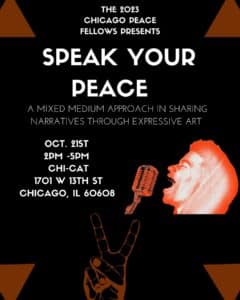
Mixed-Media Storytelling Build New Connections
Many of the Peace Fellows involved also had an opportunity to showcase their own artistic talents, which often do not have a chance to take center stage in their community work. For instance, Antwan McHenry curated a photography exhibit that showcased a variety of artists as well as his own work, which included a series of self-portraits he took during the height of the COVID-19 pandemic. Nachelle expressed admiration for his photographs, “Antwan, is an amazing photographer. […] Those pictures told a lot of stories of what was going on in his life, but probably also the lives of many others who were self-isolating. It was depression, it was confusion, it was chaos, it was sadness, it was the happiness at the end of the tunnel. All of those photos told the story of his experience.“ Kanesha, another 2023 Peace Fellow, also had the opportunity to share her poetry and bring in other local poets to perform.
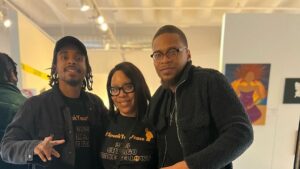
Speak Your Peace allowed for new connections to be made between artists and community activists across the South and West Sides. Reflecting on Speak Your Peace, Nachelle said that the most important thing accomplished was: “Building relationships with the community that was there."
"Working with the folks in our group, we got a chance to know each other, for real."
- Nachelle Pugh
We had been doing different workshops and activities, but we never really had a chance to [...] do the work that we do together and watch each other shine, and to be able to make suggestions with our personal experiences to help each other and make this event amazing. I think that’s the most important part and what I loved the most. Once we were done, everyone was like ‘yeah we gotta do this again and make it into something we do regularly’”. After the event, artists continued to connect and plan collaborations that will continue to center lived experiences for the world to experience and reflect on.
How the Island is Reactivating Their Public Spaces
This summer, the Island Civic Association worked with young people in the Island neighborhood of Austin to reactivate a playlot owned by G. R. Clark Elementary School as a public space. Nate Tubbs, a 2023 Chicago Peace Fellow and president of the Island Civic Association (ICA), was heavily involved in organizing the project. The work of Nate and the ICA aims to create a more connected, inclusive, and thriving community in the Island. In an effort to activate gathering spaces, ICA has been working with G. R. Clark and young community members to host Playlot Nights at the G. R. Clark Playlot. These events aim to attract attention towards creating more public outdoor spaces and promoting a healthier and more cohesive neighborhood.
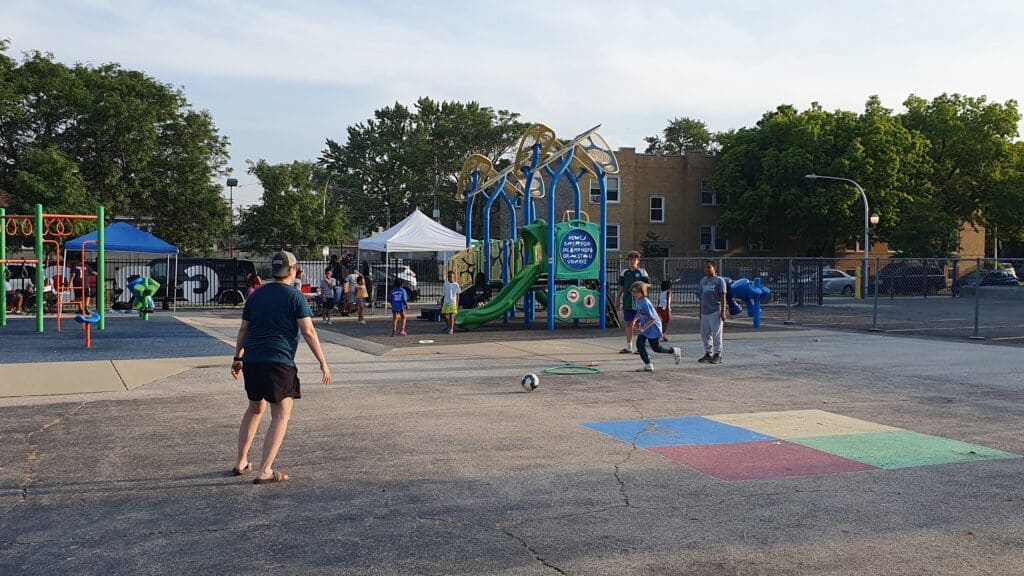
The playlot provides a large open space for people of all ages to utilize.
The Need for Public Space
Currently, the Island lacks outdoor spaces for young people and families to gather. The ICA has identified this as a problem that often causes people to have to leave the neighborhood for recreation. Nate comments, “The Island is a small pocket of the Southwest Austin community. It is a great little area, but it is kind of land-locked. This means a lot of people have to leave the neighborhood to go to a park or playground.” One way the ICA has worked to solve this problem is by activating existing areas to serve as public spaces in addition to their current uses.

Playlot Nights provided an opportunity for people to gather in a public space that was previously closed outside of school hours.
In the past, the neighbors within the Island community have worked together to activate vacant spaces through community partnerships, however the Playlot project seeks to activate existing space on a larger scale through partnership with G. R. Clark. Island residents previously created a Nature Play Garden as an intergenerational outdoor space on a vacant city lot. However, the ICA’s work on the G. R. Clark Playlot Project focuses on creating a larger space where community members can gather for larger events or play sports and is dependent on working cooperatively with G. R. Clark. Up until this point, the G.R. Clark playground has been regularly locked outside of school hours. Many community members have asked whether it can be opened more regularly. In response ICA has been in discussion with the school about how they can activate the space for community events.
The Playlot Project
To show community support for opening the playlot to the public, the ICA and the G. R. Clark Local School Council have invested in its renovation alongside young people and community partners. The 'Playlot Project' has aimed to center the voices of the young people who plan to use the space in discussions about the playlot’s future.
Improve Existing Facilities
Students provided their ideas for improving the playlot and one of their primary concerns was to renovate a fence outside of the school that had become an eyesore. Community members and students worked together to install garden beds, repaint the fence, and add new plants and benches. Their work was aided by partnering with the humanitarian organization Convoy of Hope, as well as John Burns Construction and Christy Webber Landscaping Company which both provided employee volunteers to help improve the space. This spring, students added new signage and lettering to the fence along the playlot. These efforts to beautify the space, showed ownership, and demonstrated that there are people who care and are working on the space.
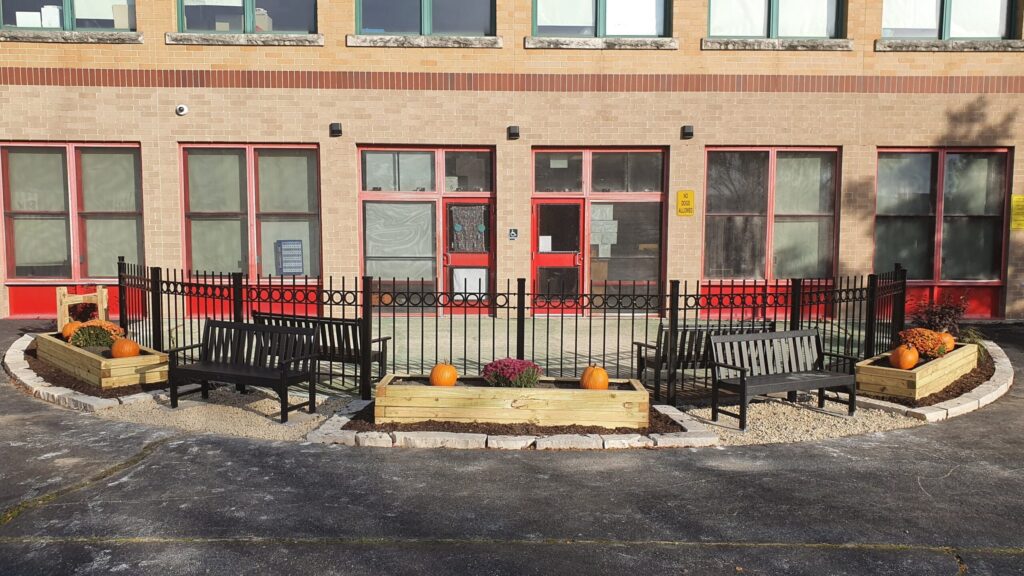
Increase Access
Following the renovations, the Playlot Nights acted as a proof of concept that the community is invested in reactivating the space. Playlot Nights were held on first Fridays through the summer, in June, July, and August when kids of all ages came together to play. The events incorporated activities for all ages such as chalk drawing, kickball games, music, and cold drinks. Nate noted that each night attracted new crowds. “I think that’s the beauty of doing something outdoors. While some people came from getting flyers and emails, other people were just walking their dogs or riding their bikes and stopped by. Some people drove by and did a double take because they weren’t used to seeing people using the space. So it was really a positive thing with great energy.”
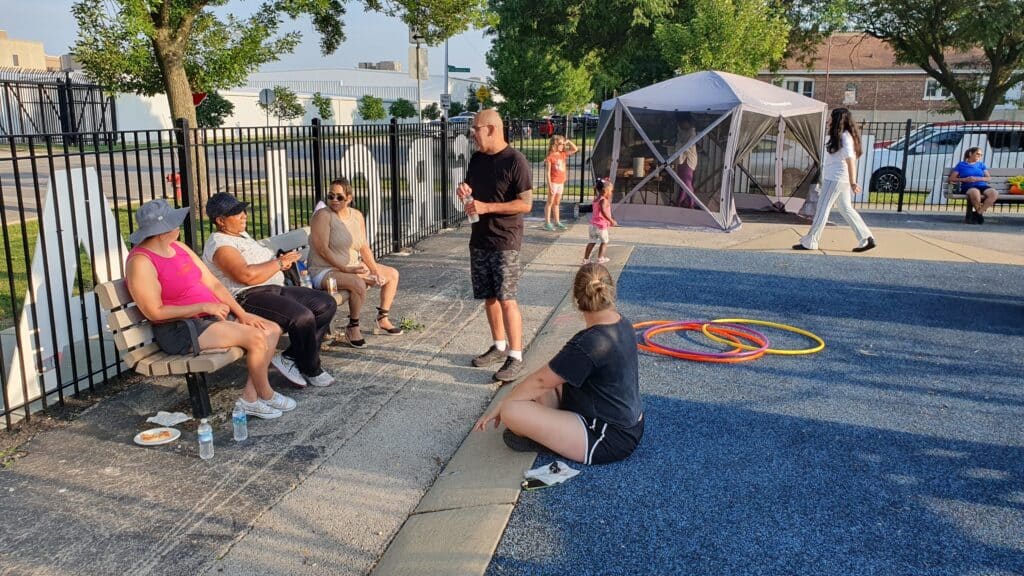
The input of young people is central to the community’s plans for the future of the Playlot project. Six young community members between the ages of 12 and 15 were commissioned by the ICA as Youth Ambassadors and helped organize the Playlot nights. Each Youth Ambassador lives within the Island neighborhood and worked alongside the community to plan the Playlot Nights in exchange for stipends. Youth Ambassadors planned events, distributed flyers, and administered games and activities. By showing that young people are capable of taking action to plan the future of the playlot and administer programs, ICA hopes to generate more community involvement and incrementally work towards a larger scale transformation of the space.
"The Playlot Nights brought the community together to have fun and opened the playlot to connect the community as a whole."
- Henry Ellis, ICA Youth Ambassador
The Playlot Project demonstrates the change that happens as a neighborhood explores their strengths. The Playlot is not something new to the Island neighborhood, but is an asset that is being reactivated through community involvement. Looking towards the future, the ICA aims to continue to maximize its impact in the community through collaboration and investment in existing resources.
Grassroots Peace Building in Nepal
Santoshi Wagle, a 2022 Goldin Global Fellow and non-violent communication (NVC) trainer for NVC Practise Group in Nepal, shares her experience and reflections leading an event for International Peace Day 2022 in her own country, Nepal. Santoshi unpacks her challenges, the lessons she learned, and the profound impact she is making by using the skills she gained through her Goldin Fellowship and the GATHER platform.
During International Peace Day, students, youths, and community groups came together to celebrate: “The participants explored the existing conflicts and causes of violence, the role of peacebuilder, qualities of peacebuilder peace-building process, emotional awareness, emotional regulation, and conflict transformation,” Santoshi explains. Coming together was necessary for the community to address common issues and find practical solutions and action plans for sustainable peace and social change. "With the growing conflict among humans at internal and external levels, the event turned out to be a self-reflective program.” she adds.
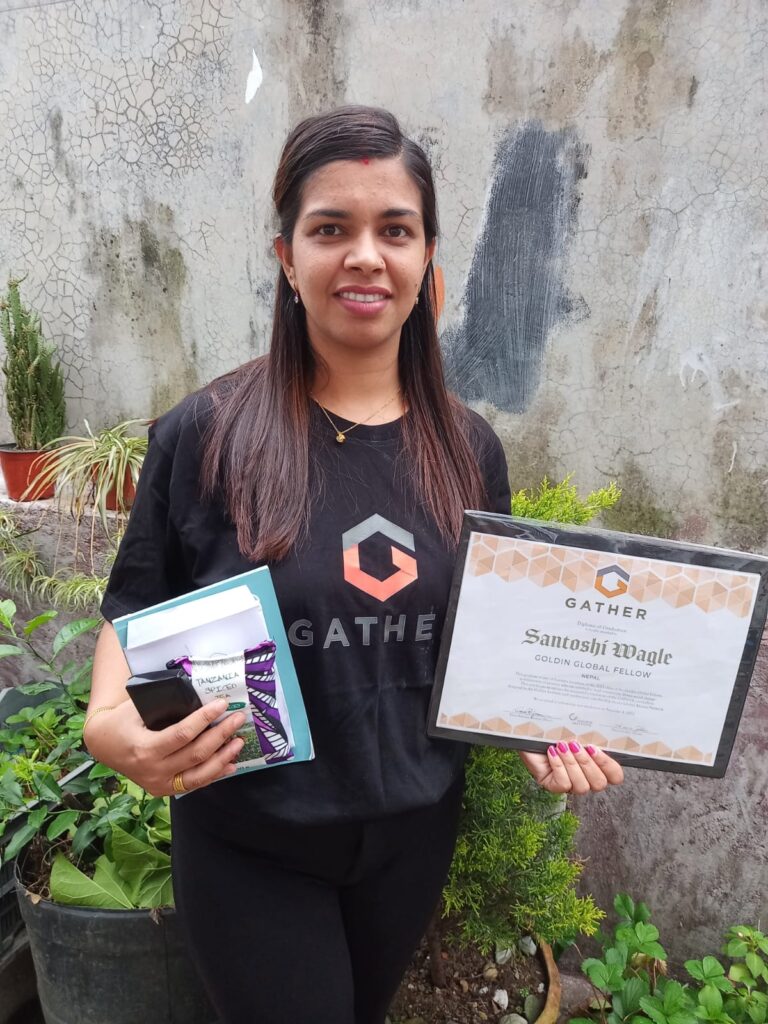
Training Women and Children on Peace Building
These community initiatives come with challenges and hardships too. Santoshi particularly emphasized the challenge of bringing a group of women together in Nepal: "Despite their interests and will, it was challenging for women to find the time for this activity because of their responsibility to care for their children and daily work.” Nevertheless, in collaboration and coordination with her local partners, namely NVC Practice Group Nepal, Radha Krishna Aama Samuha (women group), and Srijana Secondary School, a coalition was able to cover travel expenses and create some allowances for women participants: “We also managed a caregiver to care for children during the event, so we could include the mothers having small children.”
In hindsight, she also reflects on the importance of the event's timing and the arrangements of essential expenses for participants and programming. For this, Santoshi emphasizes the pivotal role of safe circles: "Those safe circles are where we can discuss and empower the groups to discuss widely in the community event, so every voice can be expressed and fully heard.” Safe circles allowed for both personal and programmatic need to be addressed by the community as a whole, rather than becoming the burden of one person.
She also acknowledges how this one-time event turned out very challenging to balance the power and openness among the participants: “Regular meetings and follow-up events are important for sustainability, awareness, and empowerment for promoting peace and social justice.”
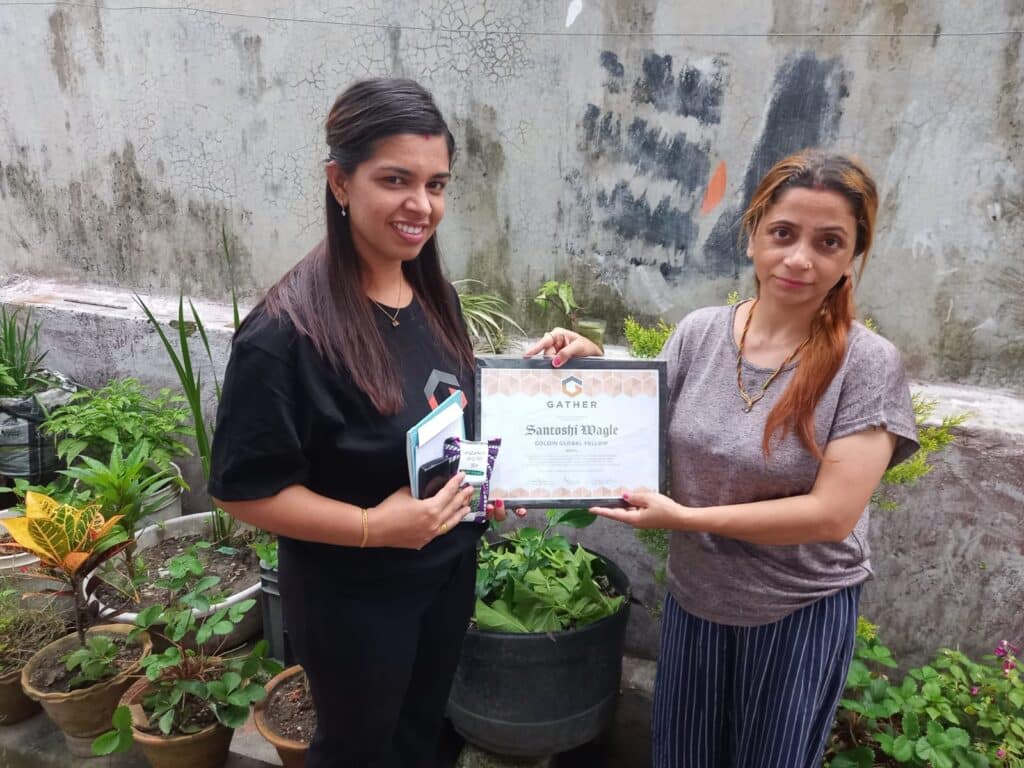
Connecting Nepal with an International Community
Santoshi connects the successful completion of this event with the skills she learned during the GATHER course while being a Goldin Global Fellow: “The creative insights that I learned during the course, in identifying community assets, community visioning summit, the idea of technical challenges and adaptive challenges, the importance of bringing the community together into the discussion for the collective issues and developing shared agreement and follow up were constructive in successful implementation and create wider impact in the community." “Gratitude to the Goldin family for the profound wisdom that I received during and after the fellowship”, she adds.
She and her team organize regular meetings, community events, and international day celebrations to strengthen grassroots communities and promote sustainable social change. This year, she is conducting workshops on nonviolent communication for teachers and women groups, continuing with women groups conducting safe listening circles and awareness programs against the dowry system and caste discrimination as a follow-up to last year's activities: “I invite the wider community to join this program and synergize to create a wider impact. Let's join hands to have peace and harmony in this land.”
Conclusively, she invites volunteers to join the programs in schools and communities, organized with her partner organizations The School of Nonviolence and Srijana Secondary Schools: “We offer an opportunity to learn, share and play with the wider community.”
An Alternative Mental Health Care Model Emerges on the Southwest Side
In August of 2023, Chicago Beyond, a philanthropic organization that invests in organizations working to ensure that young people and community members are free to live full lives, announced a $1.6 million investment in Centro Sanar.
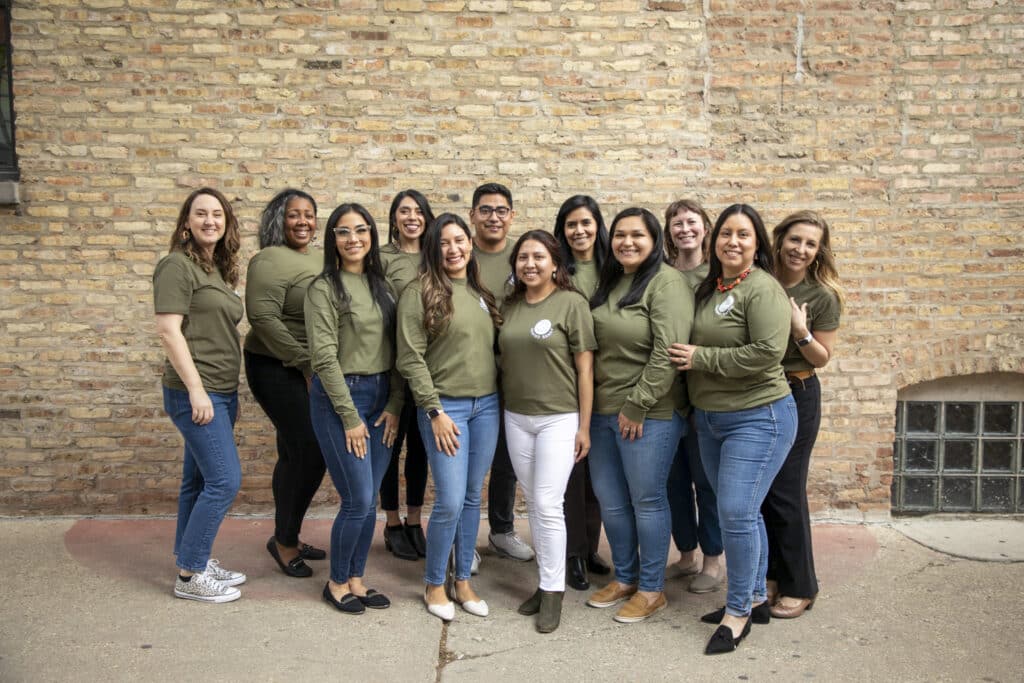
Centro Sanar, co-founded by 2022 Chicago Peace Fellow, Edwin Martinez, provides free mental health services to the southwest communities of Gage Park, Brighton Park, South Lawndale "Little Village," and Back of the Yards. This funding will help support Centro Sanar’s mission of addressing nationwide mental health service gaps in Latinx communities through a replicable model that acts as an alternative to the current mental health industry.
Chicago Beyond initially identified Edwin and the work Centro Sanar was doing through exploring the value of lived experience in community engagement and mental health services. A Growth Manager at Chicago Beyond found Edwin through an article in The Trace, a media outlet that reports on gun violence. As conversations between Chicago Beyond and Centro Sanar developed, it became clear that Centro Sanar had cultivated deep connections with both community members and organizations that serve the Southwest side. This ultimately resulted in a lasting partnership between the two organizations:
As an organization, Chicago Beyond deeply values Centro Sanar’s founders’ lived experiences and believes that in consultation with their partners and with those that they serve. Centro Sanar is serving the community’s needs, addressing systemic harms, and delivering a lasting impact.
-Lisa Caldeira, Growth Manager at Chicago Beyond
Centro Sanar is made up of social workers and therapists who have around 50 years of collective experience. When asked about the quick expansion of Centro Sanar, Edwin responded: “A lot of our success has been due to the community uplifting our work. We started off as volunteers in March of 2020 under the incubation of the Port Ministries. That provided us with a space to start the work and provide clinical services, which started to blow up in November of that same year when we started to receive funding. Fast forward to May of 2022, we were able to quickly launch a 501(c)(3) due to our relationships with stakeholders who were able to bring on state funding.”
By facilitating the development of lasting relationships between clinicians and community members, Centro Sanar has been able to expand its services rapidly and offer new forms of mental health services to an underserved population.
A Non-Medicalized Approach to Mental Health Care
Centro Sanar takes a non-medicalized approach to mental health care, which the team credits with the success of its programs. Edwin has seen mental health programs that take a medicalized approach fail due to the way their systems were funded and their way of reporting services to the government: “Our clinicians don’t have a fifty patient caseload, they don’t have a specific productivity guideline like in a medicalized system. They don’t have to do thirty five hours of clinical work for billing purposes. They are able to do community-based presentations and different levels of engagement so that they meet with community members when they are not in a state of crisis. This also means word of mouth referrals increase.”
The majority of Centro Sanar’s patients enter their care through word of mouth referrals, which means that neighbors and family members are sharing and promoting mental health care resources and are trusting Centro Sanar’s model of care. Word of mouth referrals also reduce the stigma of seeking out mental health care as friends and family members in the community encourage individuals to seek out preventative care prior to a mental health emergency.
By functioning outside of a medicalized mental health care model, Centro Sanar is also able to extend its mental health services outside of times of crisis. Whereas many medicalized mental health services are designed to tackle mental health emergencies, Centro Sanar expands services to preventative forms of mental health care. When asked what separates Centro Sanar from traditional mental health services, Edwin replied,
Consistency and presence. We’re one of the few organizations that provide free long-term care, consistent care that is not just twelve to twenty four 30-minute sessions over the course of six weeks. We’re doing what community members want, which is consistent and quality care. Even as a small organization we are making sure that we are providing long term service at different clinical modalities that tend to be inaccessible to our population and providing them in the language that they speak. That’s something that is often inaccessible in the current mental health landscape that we are in.
-Edwin Martinez, Executive Director at Centro Sanar
Collaborating to Expand Access to Services
One way that Centro Sanar is tackling the problem of helping underserved populations is by working with other organizations that complement their mental health services. For instance, their partnership with Port Ministries not only provides Centro Sanar with a space to operate from, but also allows for a co-location of services. Port Ministries, run by peer Chicago Peace Fellow Alumni David Gonzalez, offers services that complement Centro Sanar’s such as a free health clinic and an afterschool programs that can assist with child care.
Centro Sanar has also been able to co-locate with PODER, an immigrant integration center that works primarily with Spanish-speaking adults. PODER provides a space for Centro Sanar to operate from and also allows for a co-location of services. PODER offers programs that complement Centro Sanar such as workforce development and immigrant integration services. Offering behavioral health and workforce development with the same space increases the capacities of both organizations by streamlining referrals, access to care, and improving different areas of wellness.
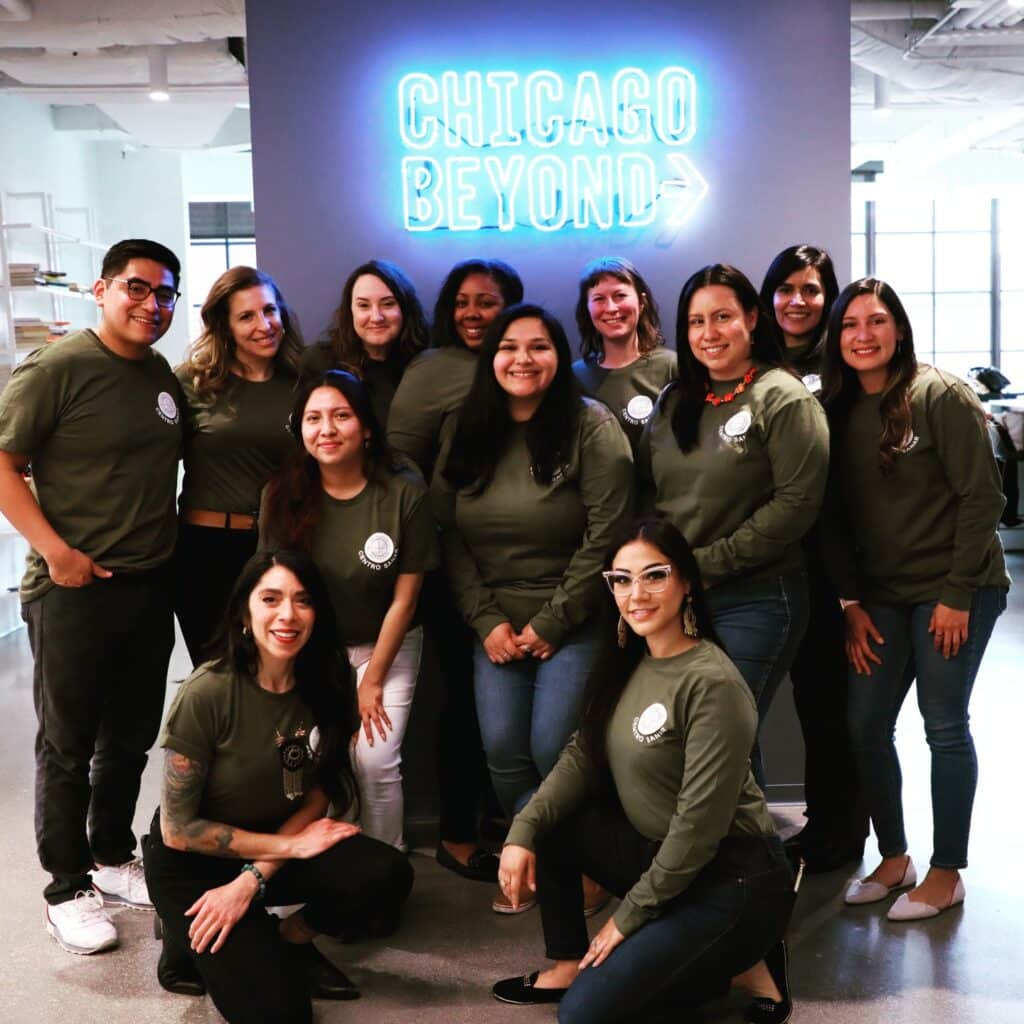
There is no shortage of work for Centro Sanar, they currently have a 10 month waitlist for individual therapy with close to 300 people waiting to receive services. This need is largely amplified by a systemic disinvestment of mental health services for BIPOC communities. As a young organization, the investment from Chicago Beyond will allow Centro Sanar to sustain their work and establish themselves as an organization. The funding provides financial flexibility for Centro Sanar to focus on what they know to be most critical for their organization and their clients. Financial security also allows Centro Sanar independence in establishing itself as an organization and figuring out what is needed in their infrastructure.
Both Chicago Beyond and Centro Sanar are especially excited at the prospect of serving as a blueprint for alternative mental health services in the future. Edwin in particular is hopeful that some aspects of Centro Sanar’s model of care can be extended into the public space, emphasizing that he would like Centro Sanar to, “give an example of an organization that is being creative, that is being innovative, and that is researching its work. This has always been a passion of mine, how can a public mental health clinic adapt this model to be implemented in its work.”
Central to both Centro Sanar’s growth and to its future is its ability to weave in partners to its mission and strengthen the community fabric. Lisa of Chicago Beyond emphasizes: “The team at Centro Sanar have carefully crafted combinations of ways to engage community members toward healing, not just towards dealing with instances of loss and grief, but towards a deep intergenerational wellness. For communities that have experienced generational harms and systemic oppression, receiving care that is long-term, free of charge, and accessible — culturally, linguistically and physically — leads to individual and familial healing, which in turn leads to community healing.”
Father's Day March Unites Englewood
On June 17, Mr. Dad’s Father’s Club held their fifth annual Father’s Day March in Ogden Park. Mr. Dad’s Father’s Club was founded in 2017 by Joseph Williams, a 2020 Chicago Peace Fellow, to get fathers and male-mentors actively involved in their childrens’ lives. Mr. Dad’s Father’s Club uses literacy and mentorship to nurture the social-emotional learning of Chicago youth so that they are better equipped to handle the world around them. This year, they held their fifth annual Father’s Day March, a family-friendly event filled with food, music, games, and giveaways.
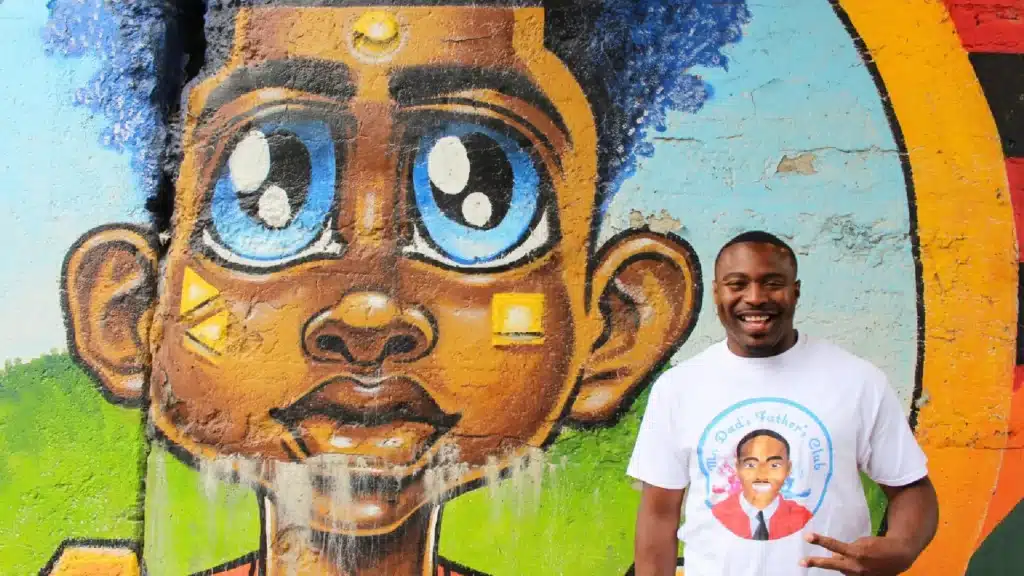
Community Involvement at the Father's Day March
Over the past five years, the Father’s Day March has grown in scale and has gained the attention of local businesses, community organizations, and political figures. All food, entertainment, and services at the parade were provided for free and local businesses donated meals, haircuts, and more. When asked about the development of the Father’s Day March, Joseph noted, “I will never forget when we started the event. We used to do it inside of the park and then we expanded out to the track field. We added dance teams, the Jesse White tumblers, face painters, and so on. Now it’s at the point where last year we had the mayor and superintendent come out, this year we had the superintendent come out again, so it has continued to expand.” As attention to the Father’s Day march has increased, the services provided have also grown in scale with more options for food and entertainment being delivered to the growing audience. In total, over 25 vendors came out to support the event and over 500 people attended.
We were really able to tie together businesses, nonprofits, elected officials under one event, for one cause. Every year we come to bring together peace and unity throughout the community… Each year I think the event might be more difficult to put on as it grows in scale, but it actually gets easier, because the more folks know about it, the more support we get.
Joseph Williams, Founder of Mr. Dad's Father's Club and 2020 Chicago Peace Fellow
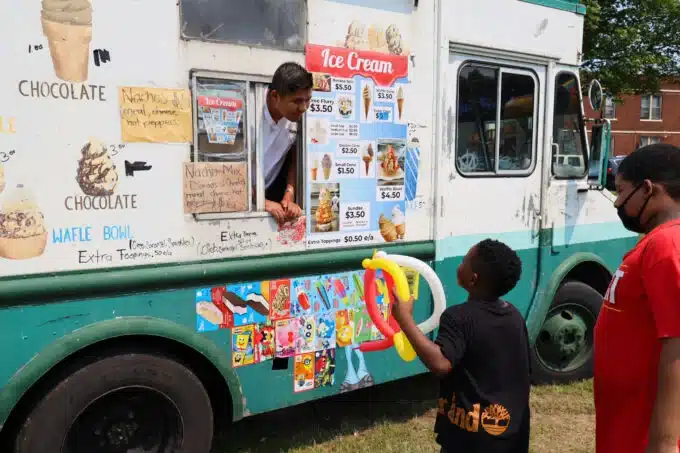
With over 500 people attending this year’s Father’s Day March, it became a site where members of the Englewood community could receive free resources and services while also spending time with their families. This year, Josephine’s Southern Cooking and White Castle donated food, while Michael Airhart of Taste for the Homeless cooked free meals. The Father’s Day March also distributed 50,000 free diapers and provided 100 attendees with free haircuts. By providing free food and entertainment, the Father’s Day March allowed family members to focus on connecting with one another in a fun environment. Attendees were also happy with the resources that the event provided. Tabling organizations provided opportunities for individuals to apply for jobs on the spot, receive phones or tablets with service for free, and other similar services.
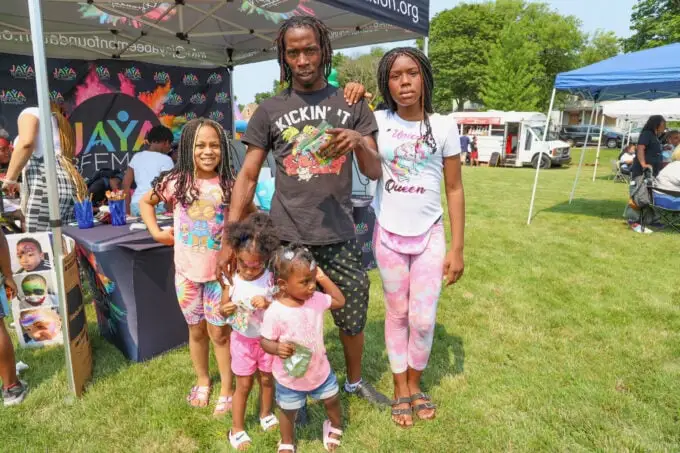
A central goal of the Father’s Day March was to bring attention to fathers’ continued involvement in their children’s lives. The event provided an opportunity to fathers and their children to relax and enjoy free face painting, balloons, an ice cream truck, crafts, and more. At the event, fathers approached Joseph and mentioned how they enjoyed the opportunity to not only spend time with their children, but also to have fun and to have a space in their neighborhood to relax.
For the future, Joseph imagines expanding the Father’s Day Parade to have themes, which would bring more attention to the event and complement the programming. He imagines bringing a carnival to the next Father’s Day March, providing rides, popcorn, ICEEs, and similar fare. As Mr. Dad’s Father’s Club continues to hold Father’s Day Marches for the Englewood community, they will continue to provide foods, services, and entertainment to the neighborhood. This celebration of community and family is the joint effort of community organizers, businesses, and other neighborhood organizations collaborating on a common goal.
West Garfield Park Boxing Club is a Haven for Youth
Brothers Tony and Sylvester Raggs recently started a youth boxing club in West Garfield Park. The club, Boxing Off the Block, is intended to teach young people from ages 13-18 discipline and the skill set of boxing. The club is located in Bethel Lutheran Church & School, and training is held on weekdays from 4pm-8pm. It is the Raggs brothers’ goal to encourage good habits in young people through the club and provide a space in which they can feel safe and have positive role models in an area where gun violence is a serious problem.
A Boxing Club that Provides a Safe Space for Youth
Boxing Off the Block serves as a haven for families in and around West Garfield Park. Tony, a 2021 Chicago Peace Fellow, has worked in violence prevention since 1981 and has served as a volunteer street outreach worker in West Garfield Park and West Humboldt Park. He and his brother Sylvester have worked alongside one another on projects working with youths and adults dealing with issues of violence and community outreach. They have used music and entertainment as a way to build community, with boxing later becoming an addition to that work. Over the course of the last two years they have found funding, trainers, and a space for their youth boxing club. They have been holding the club in Bethel Lutheran Church since October of 2022. Though the club is intended for teens aged 13-18, mothers and younger children also come to workout, box, and watch the teens spar.
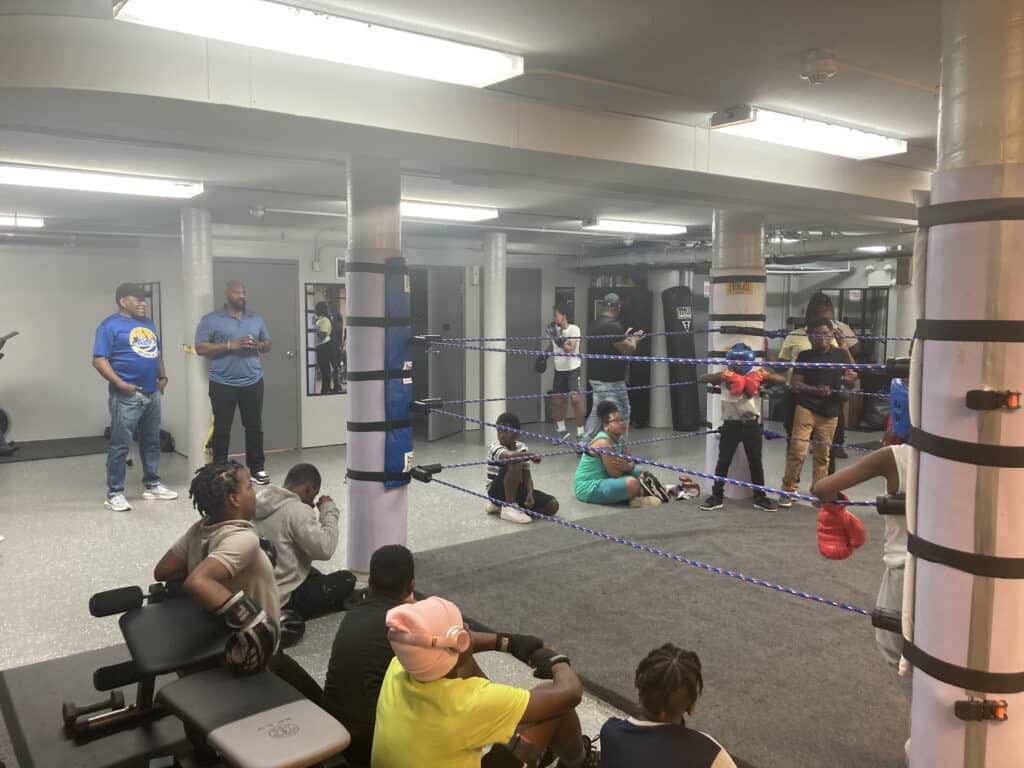
The club is stocked with workout equipment and trainers that provide the necessary tools for young people to learn boxing. The space includes a 10’x10’ ring that the brothers built themselves, punching bags, weights, and stationary bikes. They have hired two boxing coaches as well as a conditioning coach to train the young people who attend and they provide dinner for them as well. Activities are split between two groups with ages 13-15 training from 4pm - 6pm and ages 16-18 training from 6pm - 8 pm. Each group has around 15-20 young people attend.
Coaches Provide Mentorship and Structure
The coaches at Boxing Off the Block are often teens’ first mentors in boxing, providing them with training regimes and encouraging them to keep up their routines. The strength and conditioning coach, Travis Whittington, mentioned that he uses the discipline of training as a way to encourage good behavior in the gym, “when kids act out I ask them to do push-ups or run a lap so that they know what we’re here to do.” Travis provides personal coaching for the teens, giving them regimens to do outside of the gym. This is often teens’ first structured workout regime, so it provides them with a structure for building a habit of exercising.
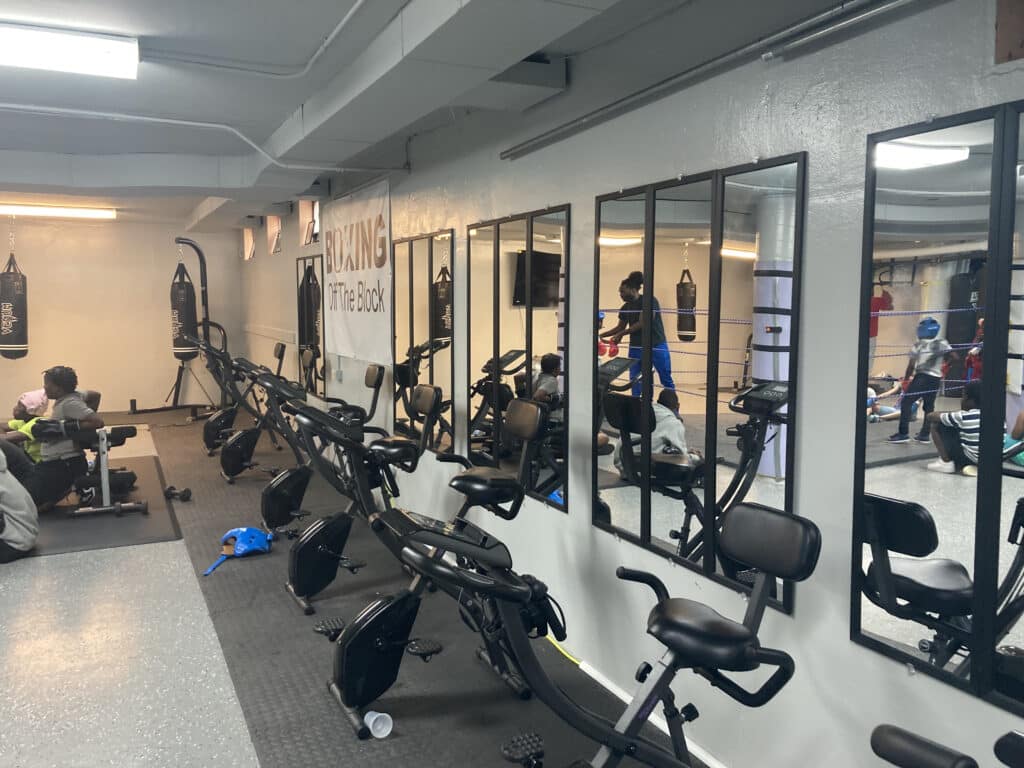
The two boxing coaches, Shawn Boyd and Levelle Whittington, emphasize the technique of boxing and its demands for control of the emotions. Shawn stresses that boxing acts as a form of stress relief and that a cool head is required to win rounds in the ring. He noted that the young people he sees excel at boxing are those who “are able to keep up a technique in a fight rather than resorting to street fighting.” Part of their hope in encouraging this kind of mindset in the youth through boxing is to help them deal with the possible threat of violence on the streets. They hope that by practicing the skill of emotional regulation in the ring, teens will be able to keep calm when confronted on the streets to know when they should back away or practice restraint.
Coach Levelle Whittington sees himself and the other boxing coaches as positive role models for the young people. He noted that many of the young people who attend the club have lost family members to gun violence and lack guidance. Boxing coaches can provide some direction and guidance by teaching the value of discipline, technique, and emotional regulation. Levelle also noted that boxing has the potential to distract from other more dangerous behaviors because it is something that can be framed as cool. Being cool allows boxing to compete with other interests, such as drugs or guns, and channels that energy into a positive direction.
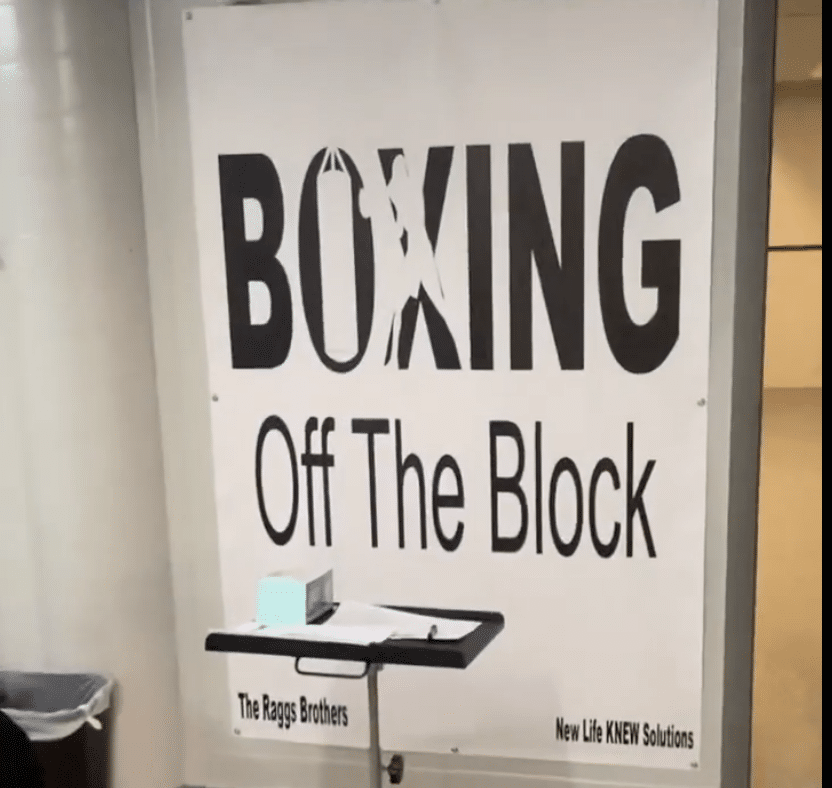
Boxing is not the only thing taught at Boxing off the Block, with a community of trainers, coaches, and students teaching the value of cooperation, self-control, and the study of technique. The club is quickly growing, with members from outside of West Garfield park also joining to learn the skill of boxing. It is the Raggs Brothers’ hope that the club will continue to gain both resources and members so that they can build community and encourage positive values in young people on the West Side.
Goldin Institute Summer GATHERing: The Power of Solidarity
We invite you to join us for the 2023 Goldin Institute Annual Summer GATHERing on XX from YY to ZZ at ABCD place. This year we'll celebrate those on the front lines of building the trust and solidarity necessary to defuse situations when they arise. More and More.
Students Visit Little Rock to Explore the Civil Rights Movement
On March 28, the LUV Institute arranged for 60 middle and high school students to travel to Little Rock, Arkansas, to learn about the Little Rock Nine, the group of nine Black students who enrolled at the formerly all-white Central High School in Little Rock, Arkansas, in 1957. The Love, Unity & Values (LUV) Institute has been working with underserved youth since 2012 to inspire hope and empower them with economic opportunities while building resiliency and social-emotional competencies. Cosette Nazon-Wilburn, Executive Director of the LUV Institute and a 2020 Chicago Peace Fellow, formed partnerships between the LUV Institute, local schools, the Illinois State Board of Education (ISBE), and a community of teachers to facilitate the trip.
Students at University of Chicago Charter School and Ariel Community Academy participated as a part of LUV Institute’s bi-weekly Media Empowerment Program. LUV was able to expand the program this year through funding from the ISBE’s Phillip Jackson Freedom Schools Grant. The LUV Institute has held Journey to My Better Self programs for the past eight years, but this is the first year that the program has included an out of state trip. The programs prepare youth and young adults ages 16-24 to be job-ready for economically sustainable employment in high-growth industries and occupations. The Media Empowerment Program focuses on training students in journalism and storytelling.
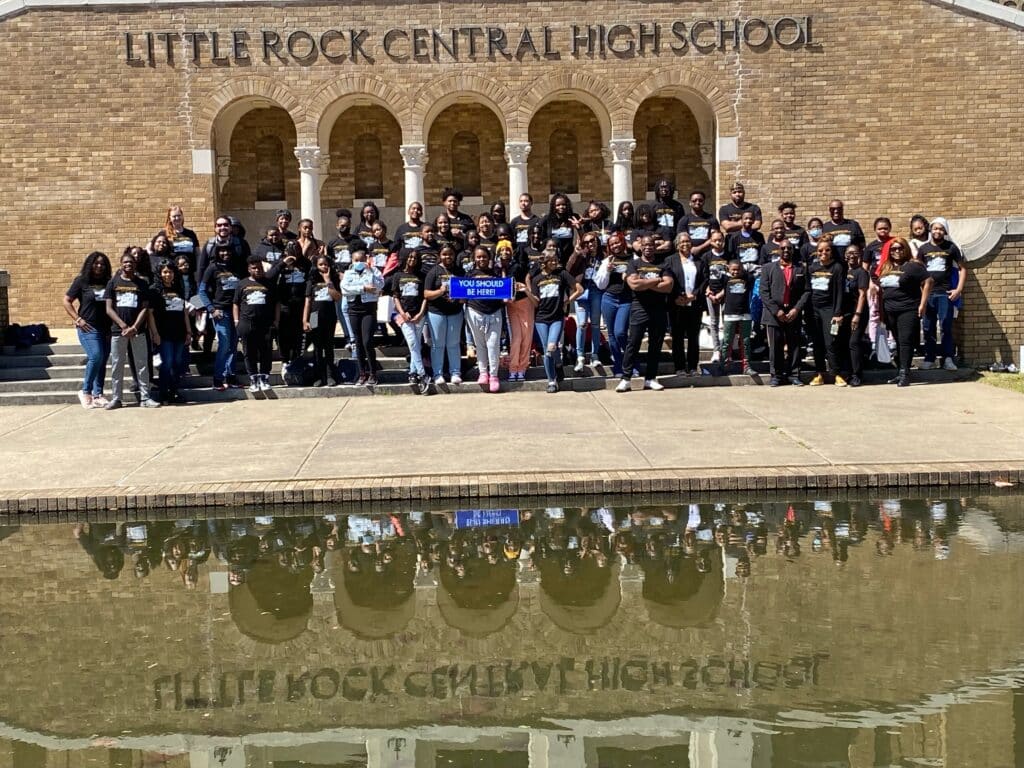
The LUV Institute also hired teachers from University of Chicago Charter School and Ariel Community Academy with funding from theFreedom Schools Grant. The grant is intended to fund a Freedom Schools network, offering a research-based, multicultural curriculum during the summer and/or school year to improve outcomes for low-income students. This funding allowed the LUV Institute to pay particular attention to hiring teachers from neighborhood schools to take part in the program. Each teacher was paid $60 an hour, which is higher than what teachers are usually paid to work for afterschool programs. By hiring neighborhood teachers, the LUV Institute not only contributed to the community of teachers but also invested in the schools they teach in. Teachers, deans, and administrators also learned restorative practices, which provided them with tools to improve their classrooms.
Leading up to the trip to Little Rock, the LUV Institute taught a six-week course on the Civil Rights Movement. The curriculum for the program aimed to teach students how to tell stories under the lens of racial healing and grasp the idea of looking at history as a way forward. The curriculum was provided by nonprofit Facing History and Ourselves, and was designed to create a pathway for young people to explore Little Rock Nine narratives within their own lives. One of the books offered as part of the curriculum is ”Warriors Don’t Cry: A Searing Memoir of the Battle to Integrate Little Rock’s Central High” by Melba Patillo Beals, one of the Little Rock Nine. “Warriors Don’t Cry” emphasizes the role media played in theLittle Rock Nine and the Civil Rights Movement as a whole, making it a strong tie-in to the program. Students were also provided with iPads to document their experiences and participate in the curriculum.
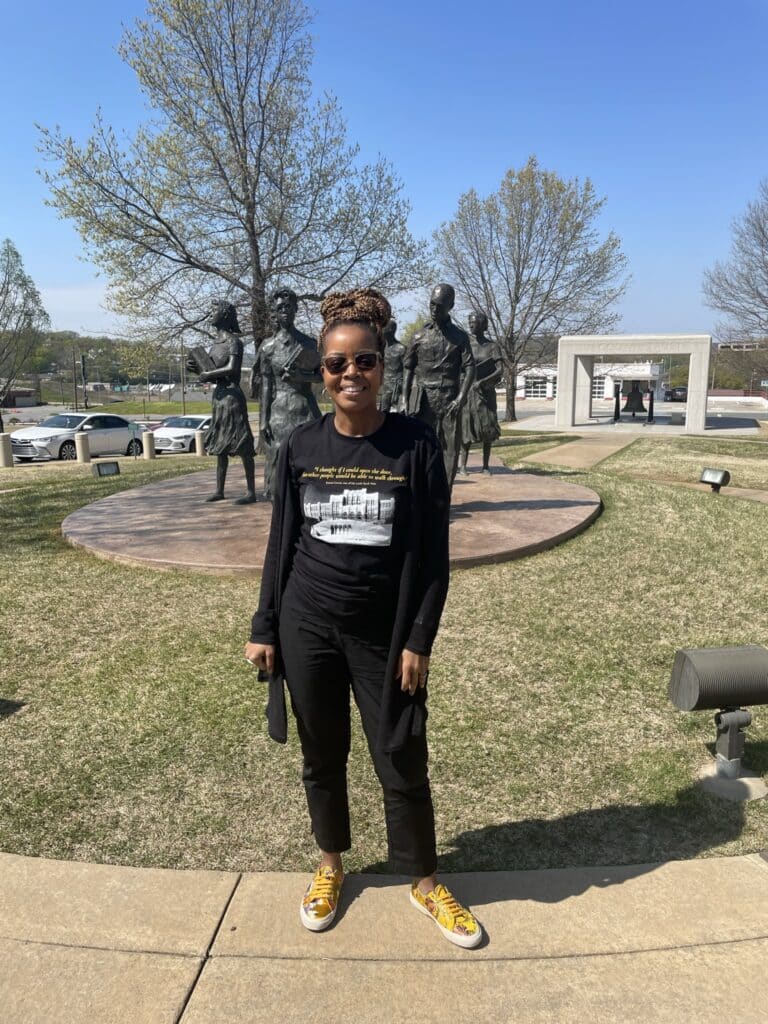
There was an additional layer of opportunity for high school students who took part in the program as they received leadership training and served as mentors for the middle school students. Both high school and middle school students took the course side-by-side to learn history and create their own narratives. All of the high school students who participated attend University of Chicago Charter School in Woodlawn. The next phase of their project is to create a mosaic that will be at the school and serve as a reminder of their experience.
When it came time to visit Little Rock, the students had a full day of activities, visiting Little Rock Central High, the Arkansas Capitol building, as well as various memorials. Central High is now a National Historic Site and students were able to visit a memorial park, the historic Mobil/Magnolia gas station, and the visitor center. On their trip, students watched a documentary about the Little Rock Nine and also got a chance to see memorabilia and purchase souvenirs. The trip included a visit to the Arkansas Capitol Building, which features a statue of every member of the Little Rock Nine, as well as quotes from them.
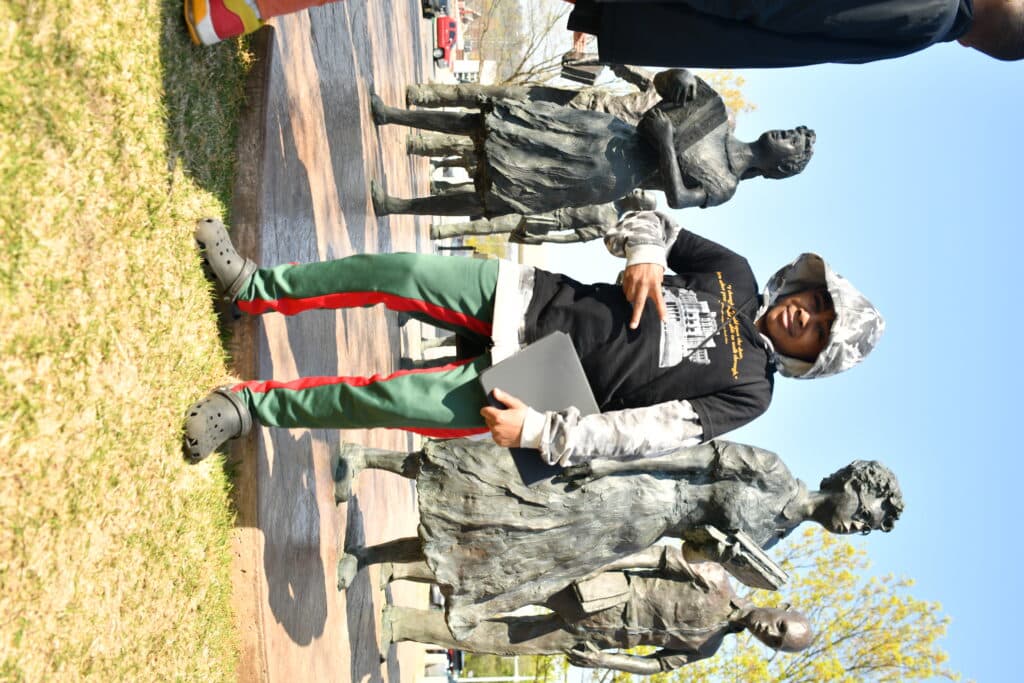
The visit to Central High revealed the resources offered by the school's campus and how the diversity of the school has advanced since the integration of the Little Rock Nine. They met with two assistant principals from Central High who provided updates on the current status of the school. The assistant principals emphasized the diversity of Central High, which now accommodates students internationally who speak over 30 languages. Today, young people all over the world attend Central High, since it is a large school with the resources to support a diverse student body.
As students visited Central High and other historical sites related to the Little Rock Nine, they reflected on their own experiences and the current opportunities they have to address social injustice. Cosette emphasizes that the trip was intended to have the students ask, “What are the Little Rock Nine situations in my life? What have my parents and grandparents had to do? And when have I had to stand up to injustice?”
Visiting Little Rock will hopefully inspire ongoing leadership within the students. By focusing on the Little Rock Nine, who were kids between the ages of 14-16 when they transferred schools, the curriculum focuses on young peoples’ capacity to be change makers.
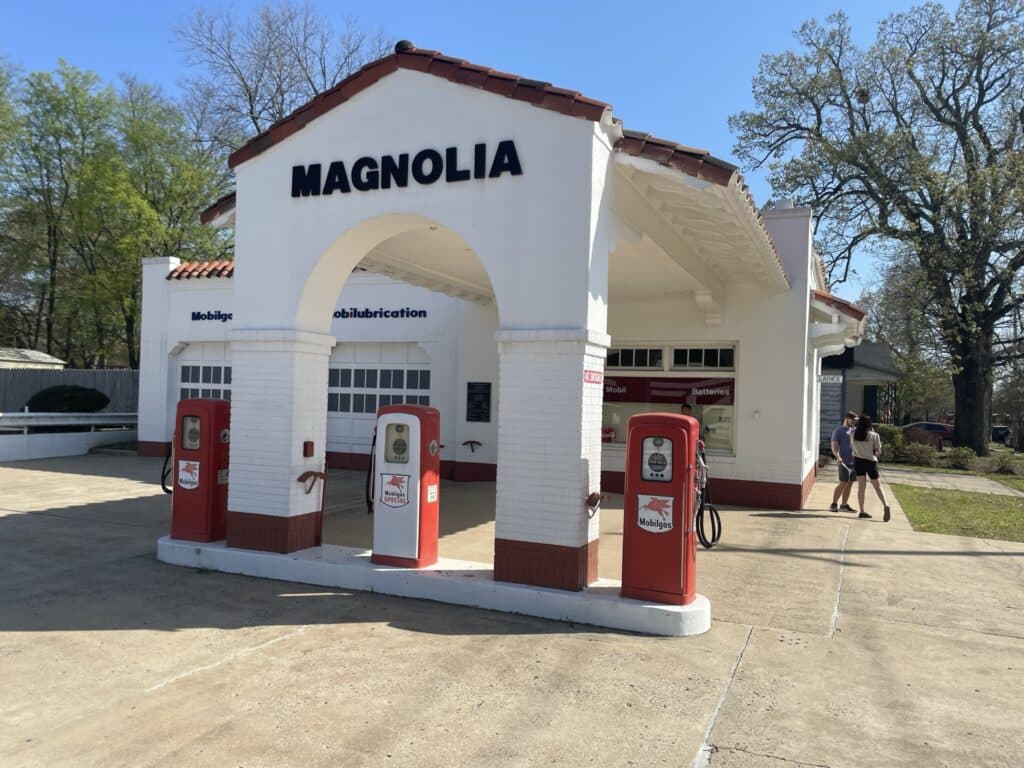
Opportunities for reflection were extended to the families of students. One of the adult chaperone’s is the grandmother of one of the children in the program. She stood on the street in front of Central High and provided testimony of what happened when the Little Rock Nine were escorted into the school by the National Guard. She noted how the neighborhood around Central High used to be an entirely white neighborhood and has now become a Black neighborhood. She also talked about how the Little Rock Nine saw Central High School as an opportunity for educational advancement. Central is a large high school close in size to a college campus, which was a stark contrast to the much smaller all-Black Horace Mann High School that was built during the same period.
Following their visit to Little Rock, the students’ experience of the trip will be used to tell their own stories. They used their iPads to create narratives about their trip. A documentarian accompanied them and will work with the students to combine their narratives and footage to create a documentary. Through connecting with history and actively applying it to their lived experiences, the students will see the importance of telling their own stories and engaging with their community.
Camp Duncan Brings Social Engagement and Smiles to Chicago’s Youth
The girl in this picture is Malia Causey, a nine-year-old from the Austin community in Chicago who lost her brother, Malik, to gun violence in 2016.

Her life has not been the same since the loss of Malik, who was 14 at the time of his death.
For Malia and other kids in similar situations, social activities and meaningful engagements with their peers are warmly welcomed.
"Ms. Davis, can we please ask the Goldin Institute and Talk2mefoundation to bring me back? This was really fun.''
Those are the words that Malia says to Nicole "Coco" Davis, 2021 Chicago Peace Fellow and CEO/President of Talk2mefoundation, who recently took young Chicagoans on a trip in the great outdoors at Camp Duncan.

"I like it here; no one will ever get shot or killed." Malia says further.
Malia's wishes lie in the heart of Talk2mefoundation. This non-profit organization supports kids whose parents and caregivers are incarcerated and need healing and peace through belonging to a community.
Speaking briefly to Goldin Institute about the importance of this youth camp, Nicole emphasizes the need for such support in the first place.
"They say money cannot buy you happiness, but the Goldin Institute brought 25 smiles for youths at Camp Duncan." -- Coco Davis
Thanks to the generous support of her peers in the Chicago Peace Fellows Mutual Aid Collaborative, she made it possible for these young people to socialize, learn, exercise, and dance together.
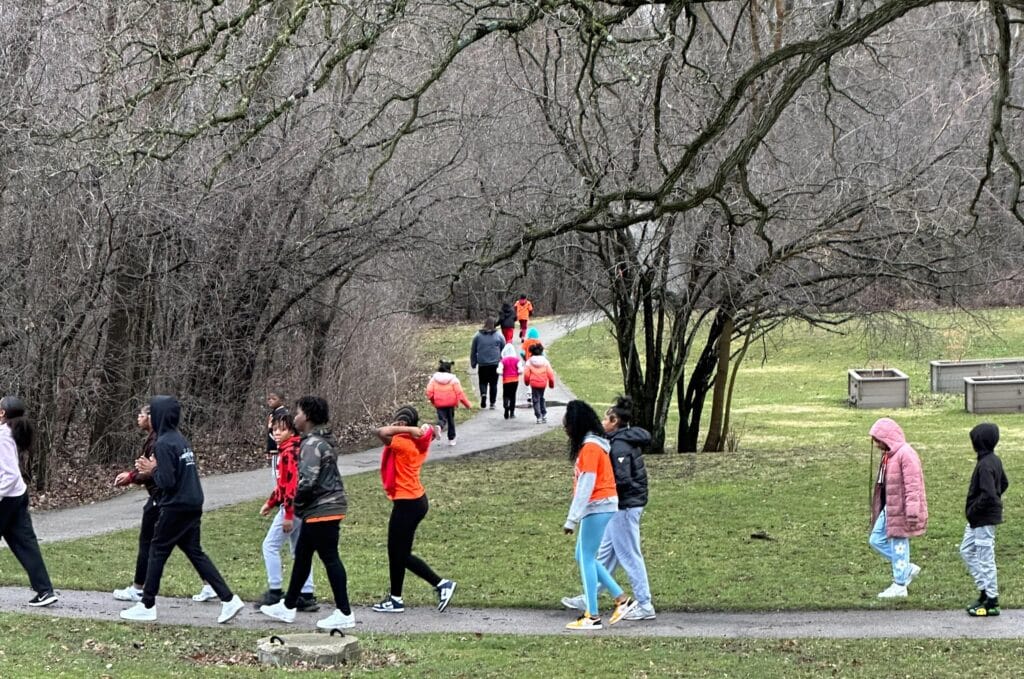
"Shout out to the Goldin Institute and the Mutual Aid Collaborative for making it possible for me to grant the wishes of 25 youths by giving them a chance to experience life outside of their normal living."
“I have so many sponsors to thank it's unreal" she wrote in this Instagram description, where you can also see the smiley faces of participants after a dancing challenge.
When becoming a Chicago Peace Fellow, Coco highlighted wanting to be part of the solution. She joined the Chicago Peace Fellows program to become a vital contributor to bringing healing and peace to communities in Chicago.
As one can see, Coco is an active voice and advocate for social justice; she keeps ties with with the Mutual Aid Collaborative made up of 74 Alumni of the Chicago Peace Fellows program as a valuable part of her community-driven approach to needed change. But the work continues beyond there.
Talk2mefoundation still needs support to continue its vital work in the community. Coco passionately advocates decriminalization and knows it takes a community to make a difference. That is why she's calling on everyone who believes in second chances and fundamental human rights to support her organization's work.
Every little bit counts, whether through a donation, volunteering, or simply spreading the word.
The connection between Goldin Institute and its fellows goes beyond the length of the program. When Fellows graduate from the Fellows Program they become part of the Mutual Aid Collaborative and the Global Alumni network that connects Chicago leaders like Coco with peers from over 40 countries across the globe.
Follow us to stay tuned for more opportunities:
